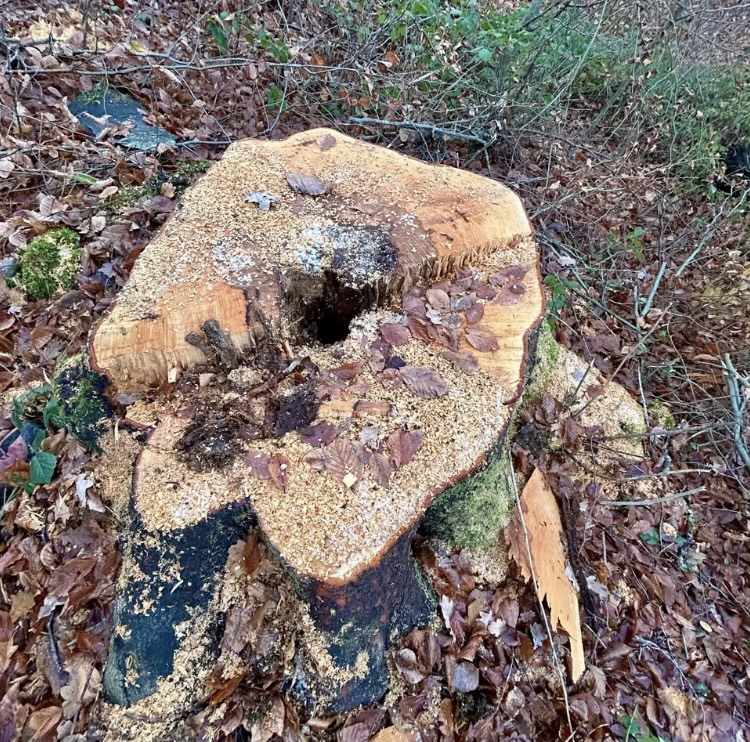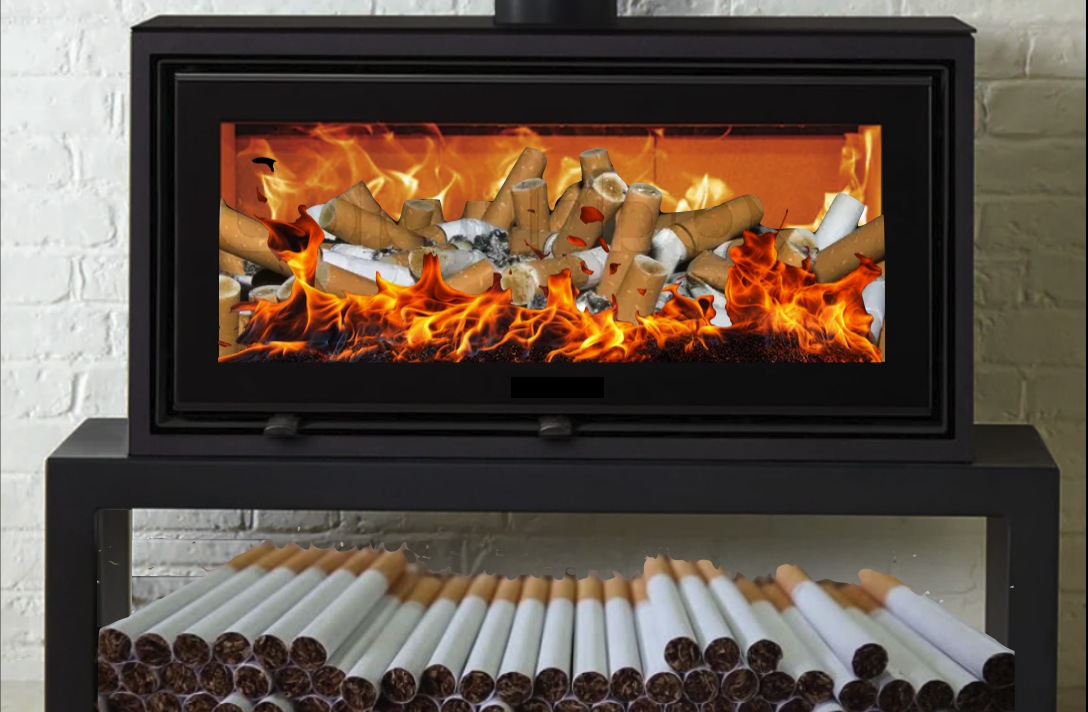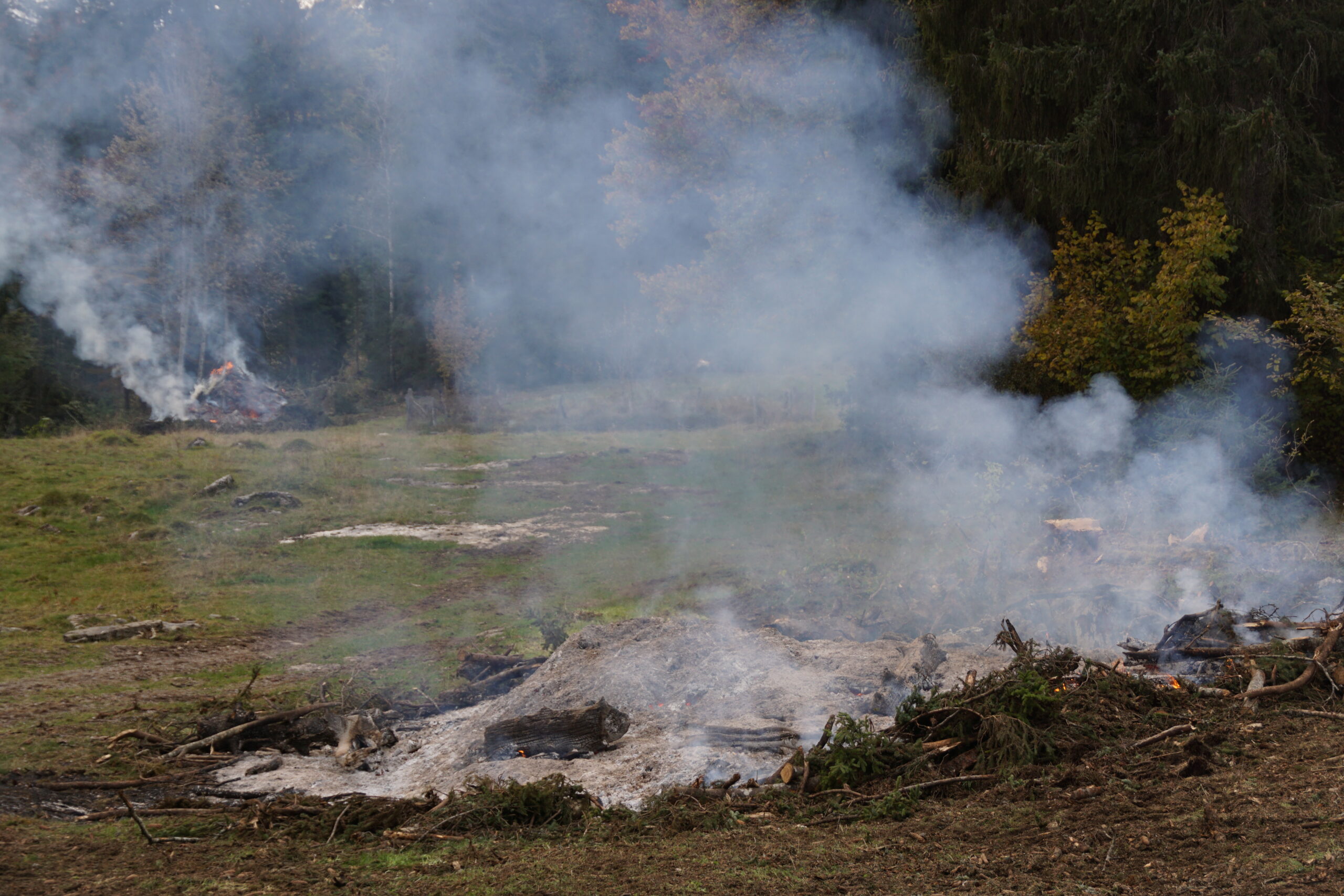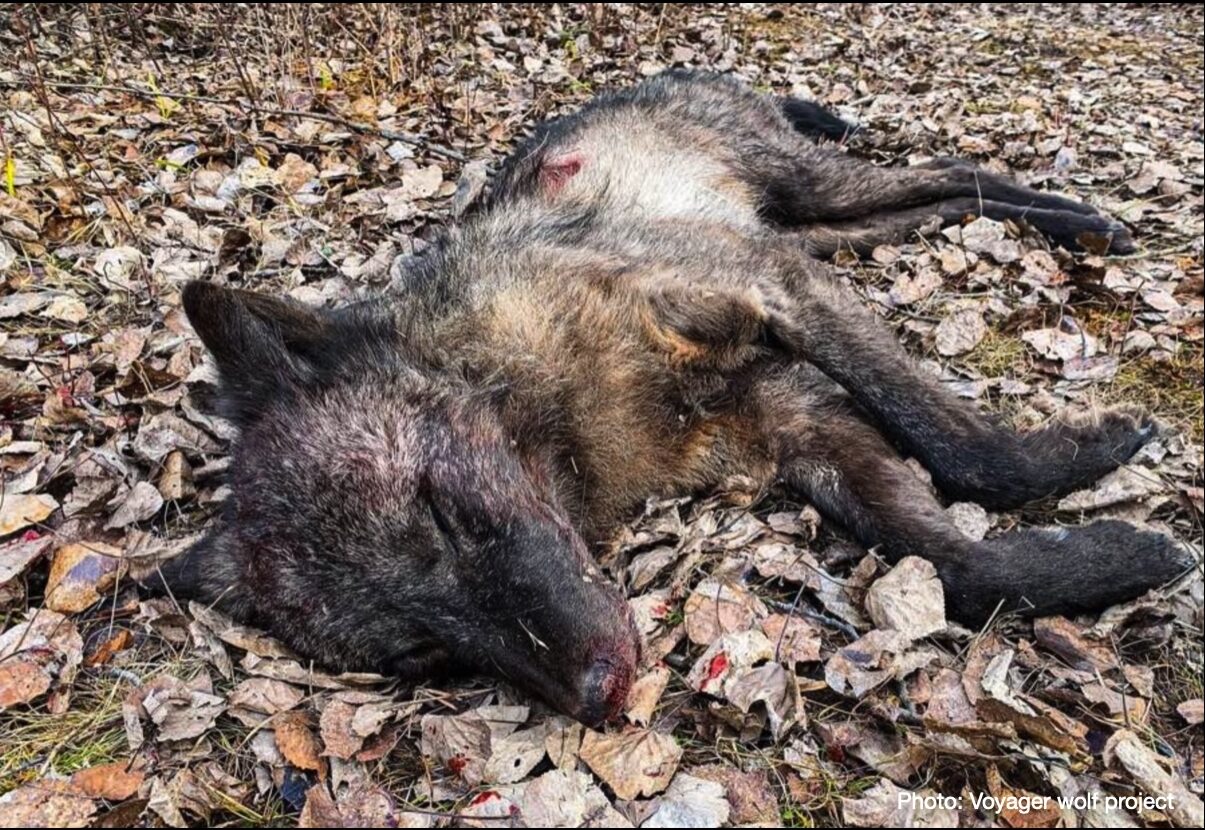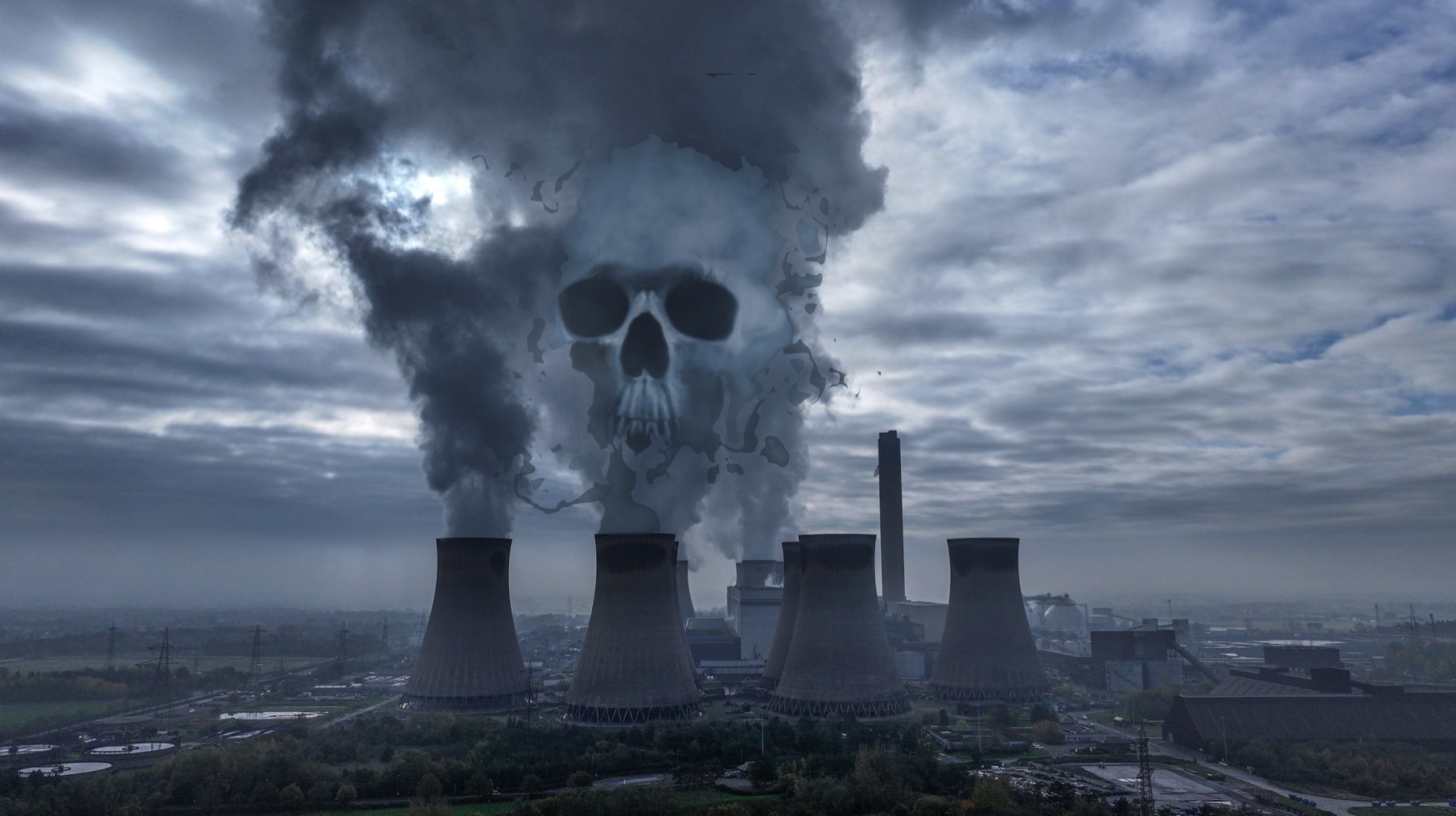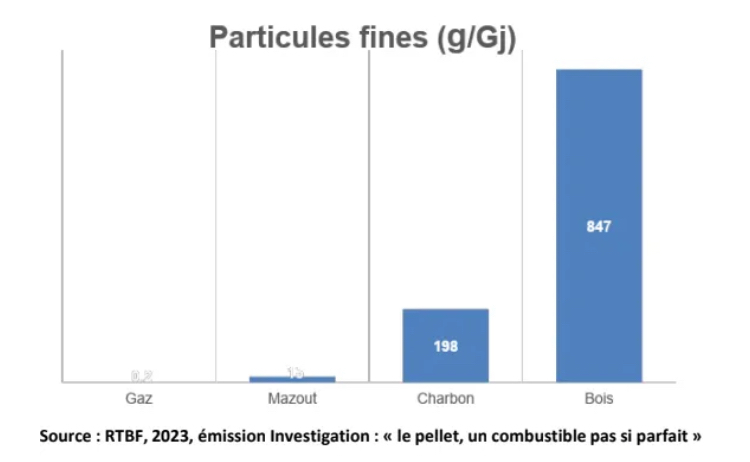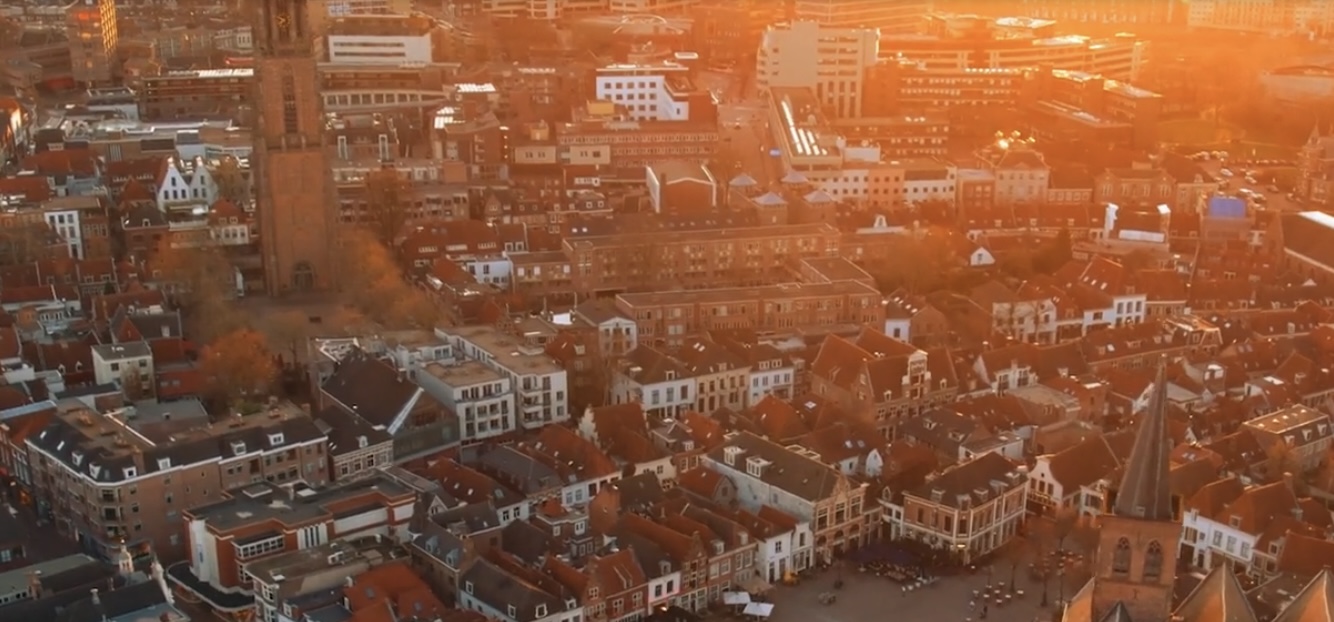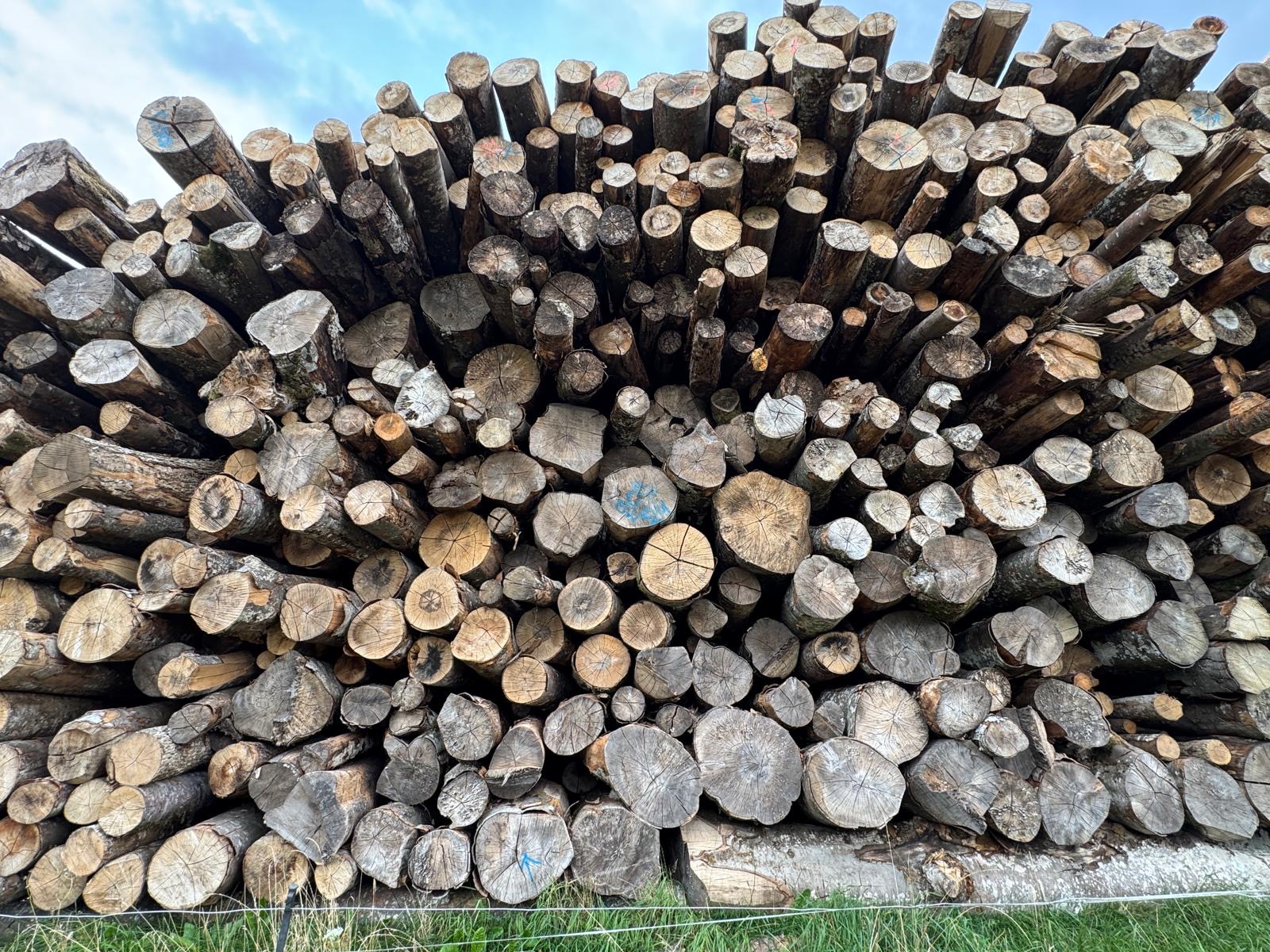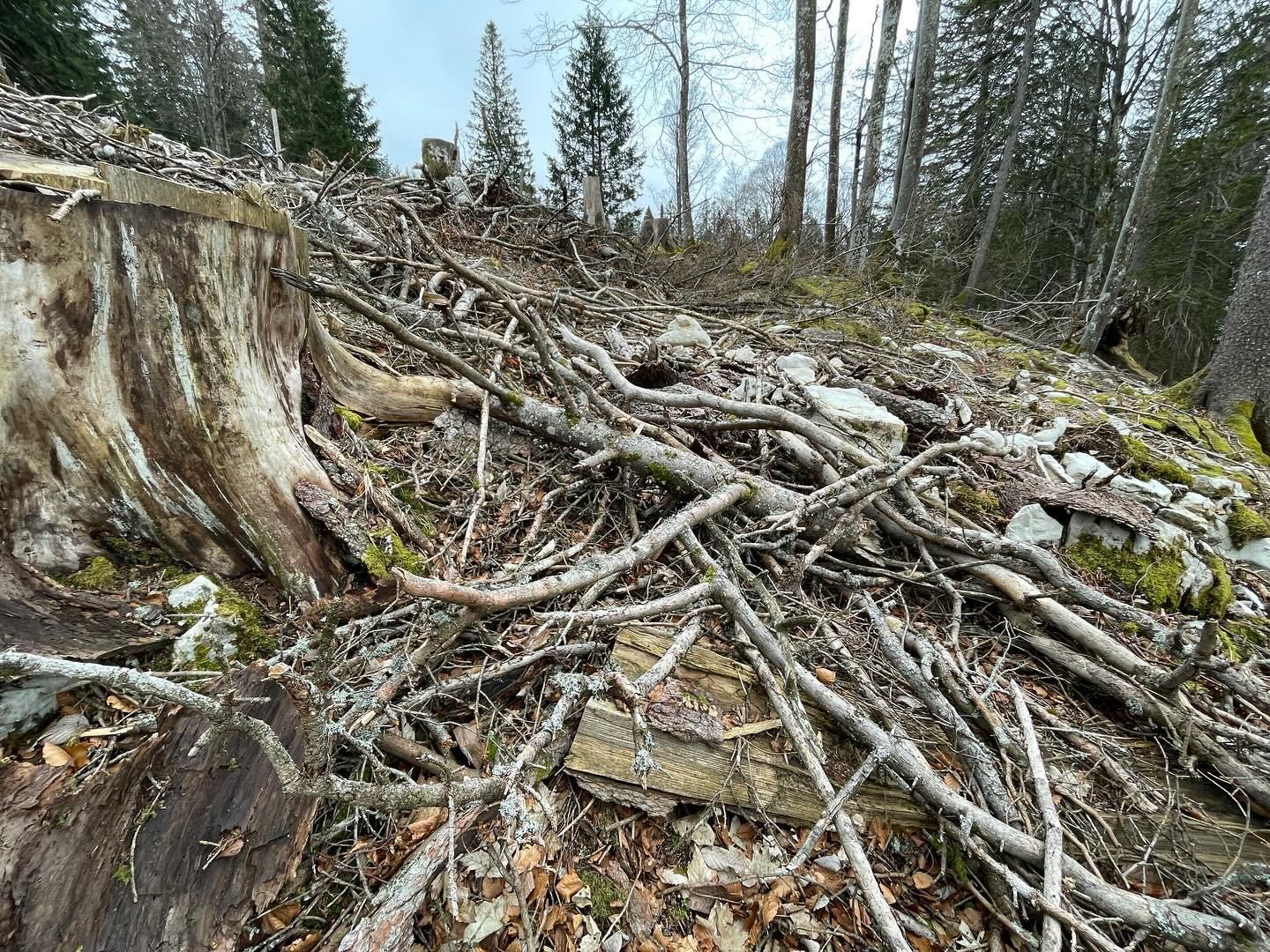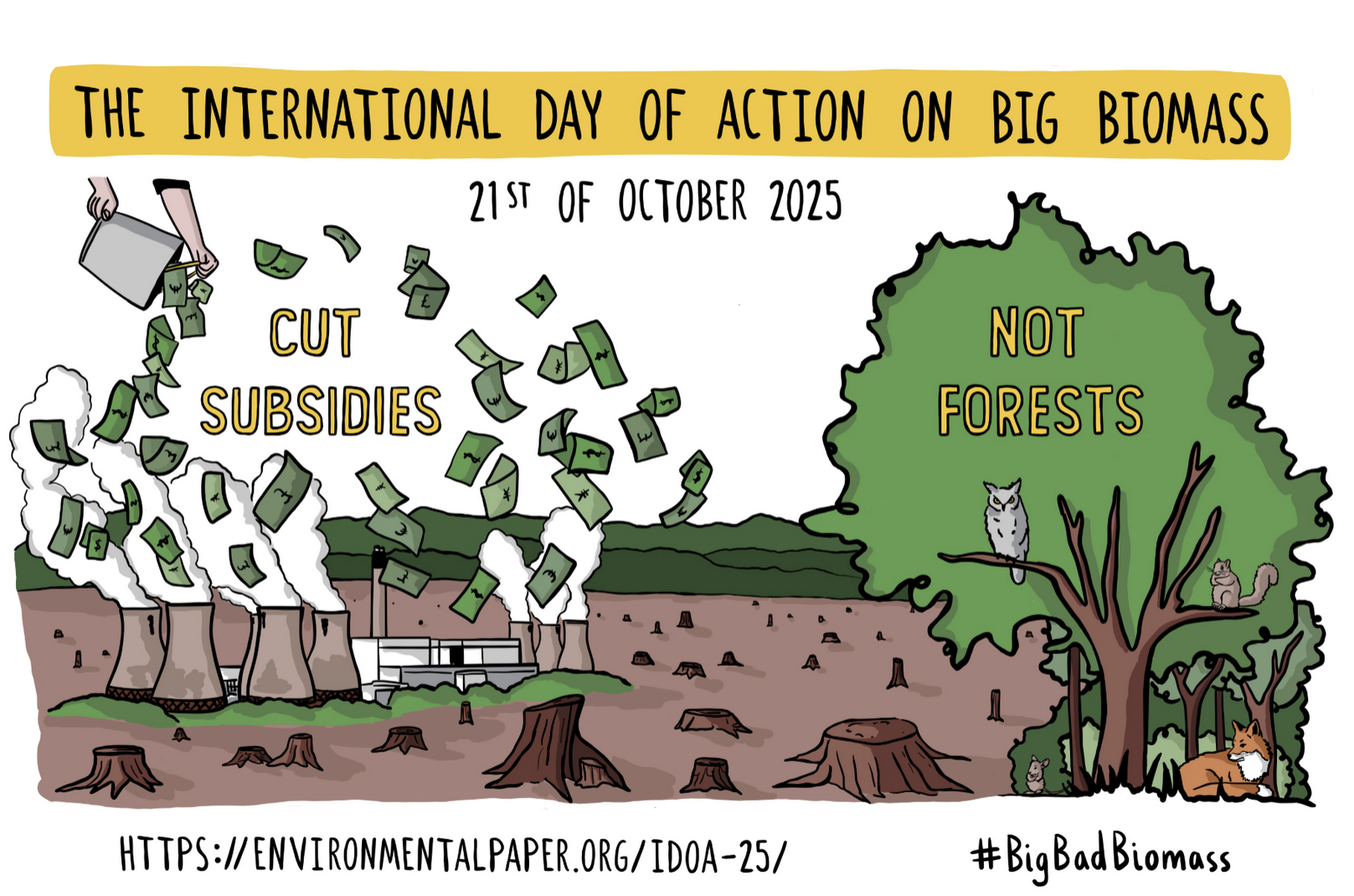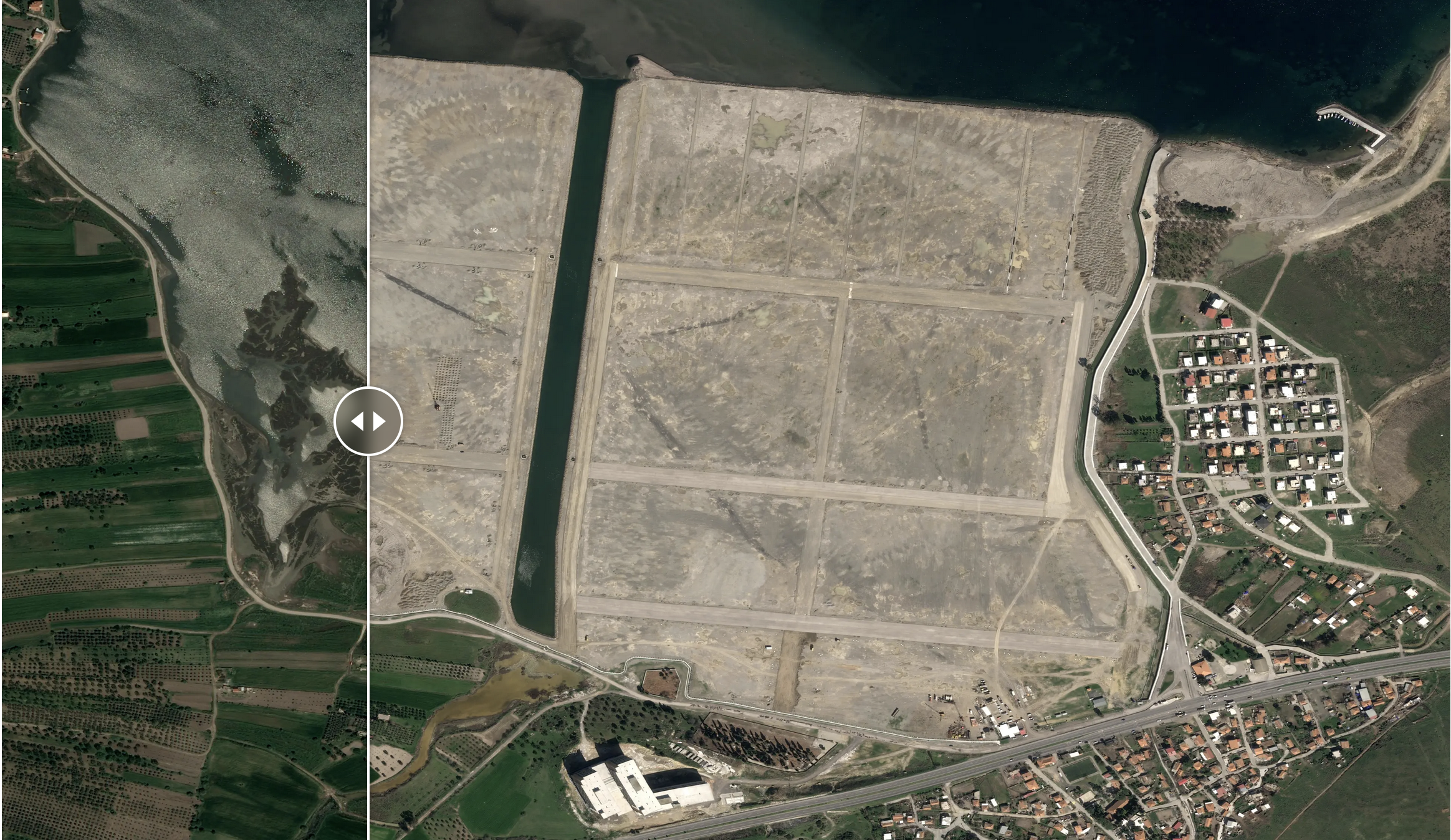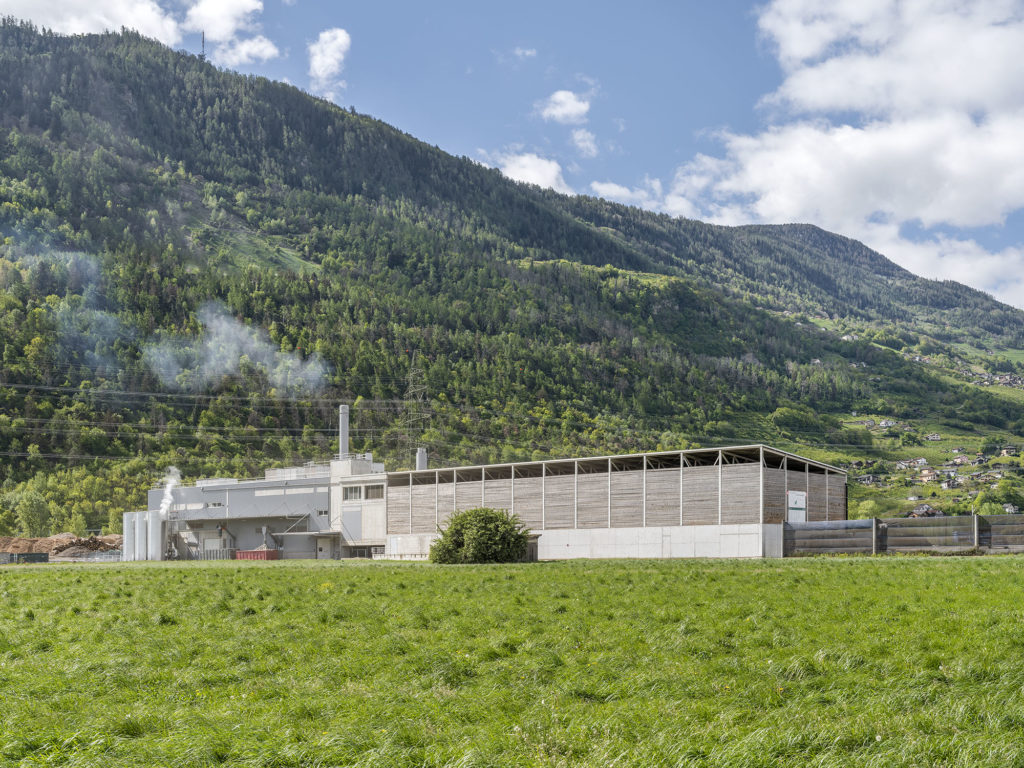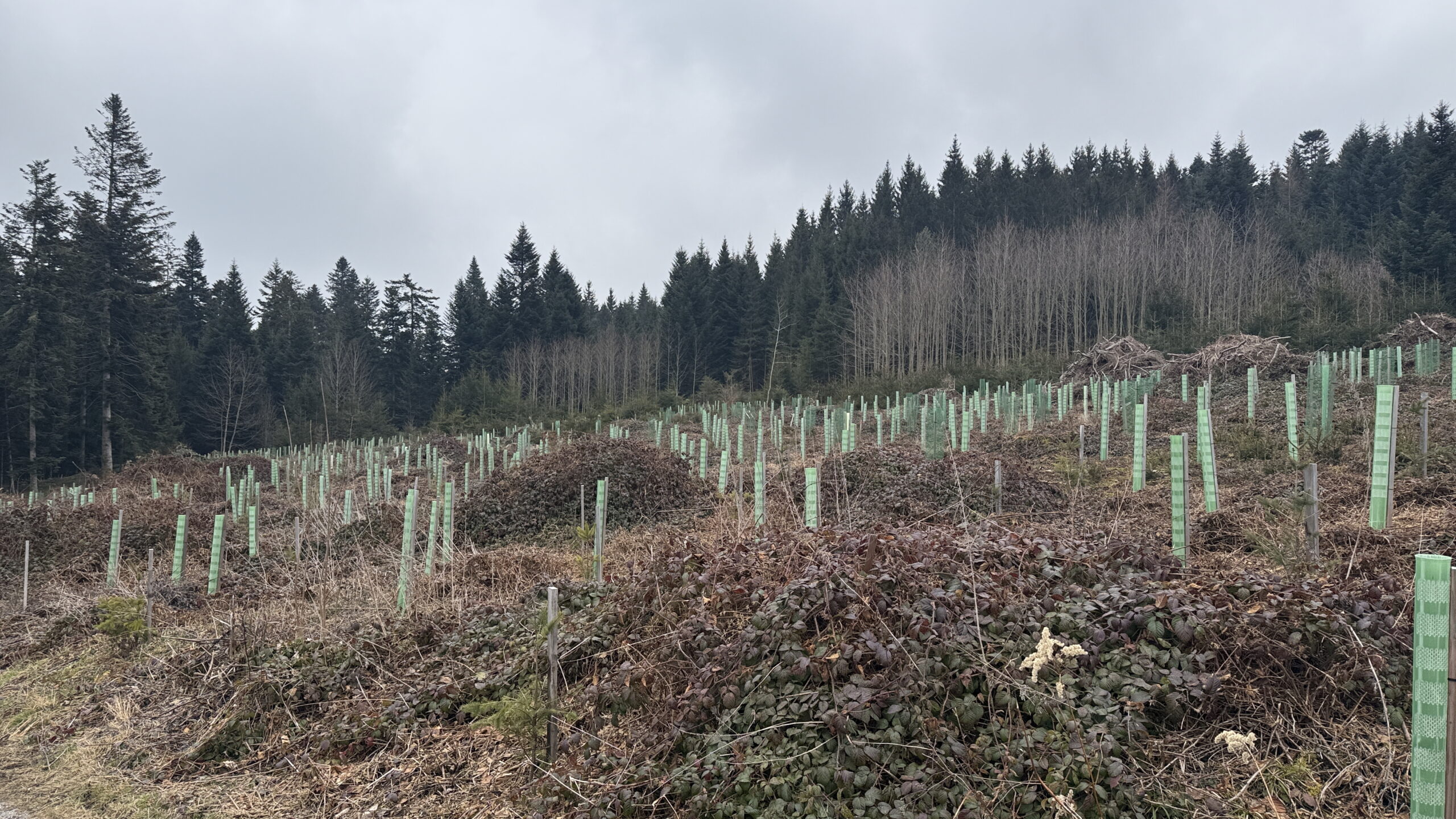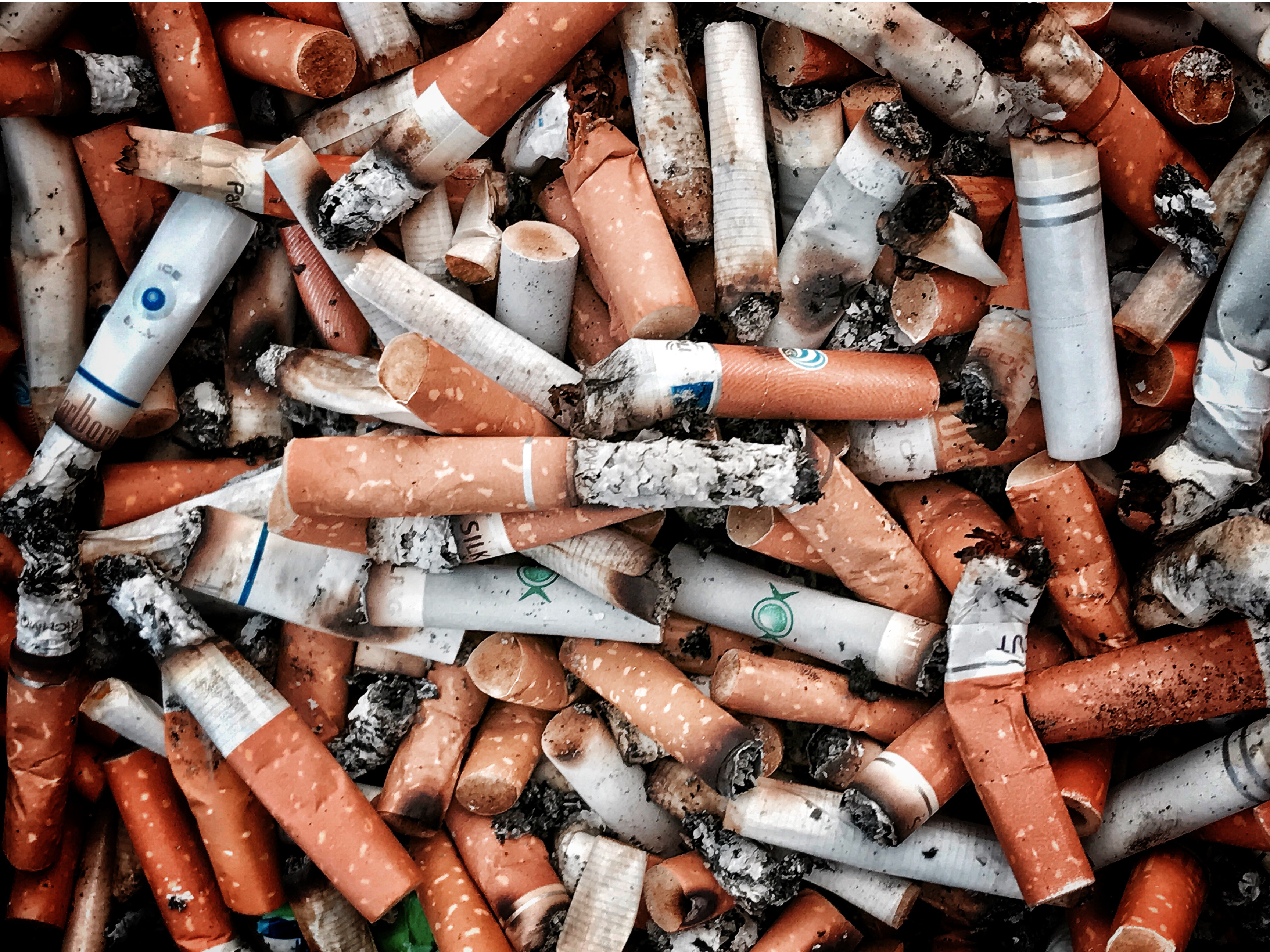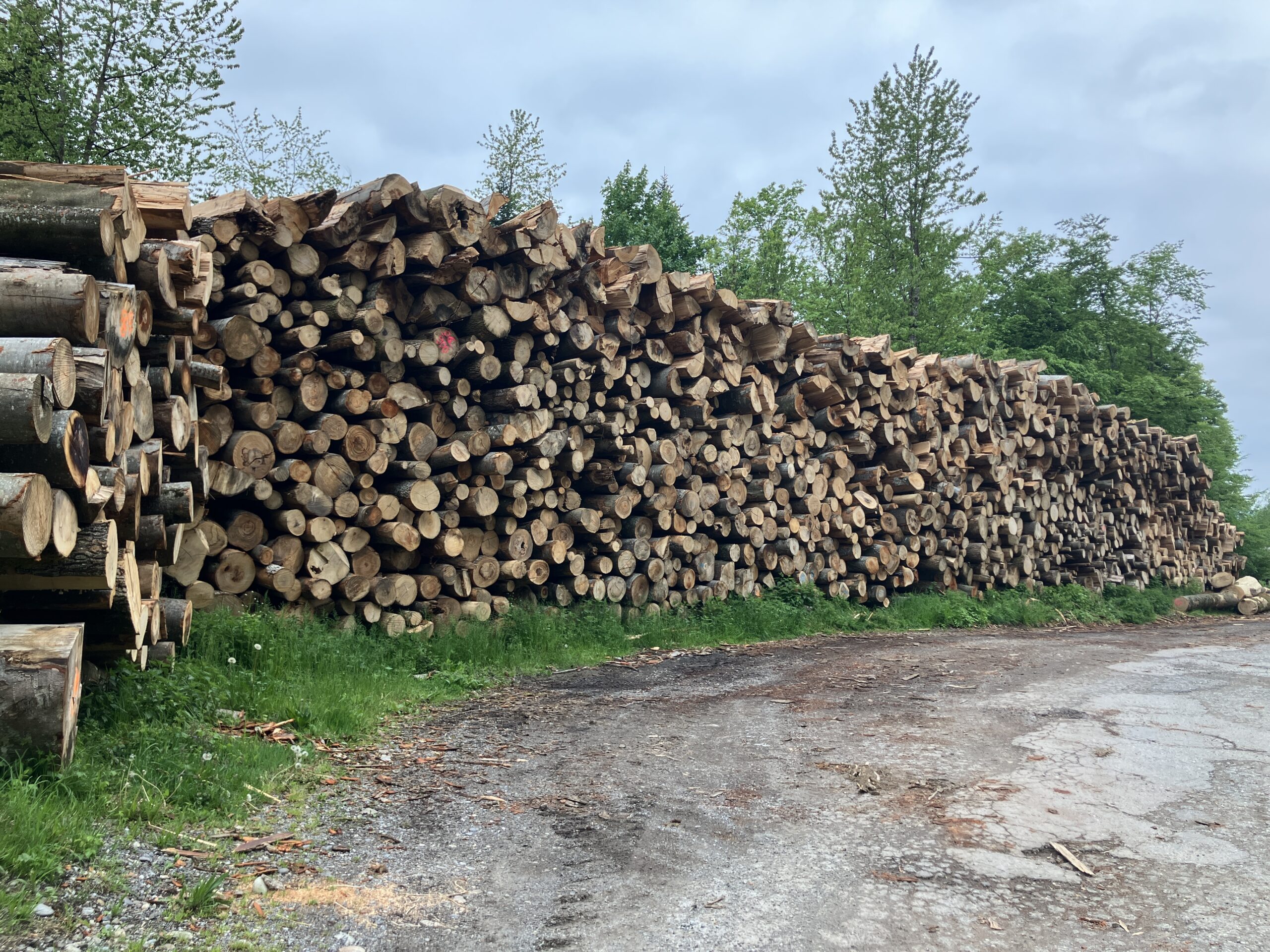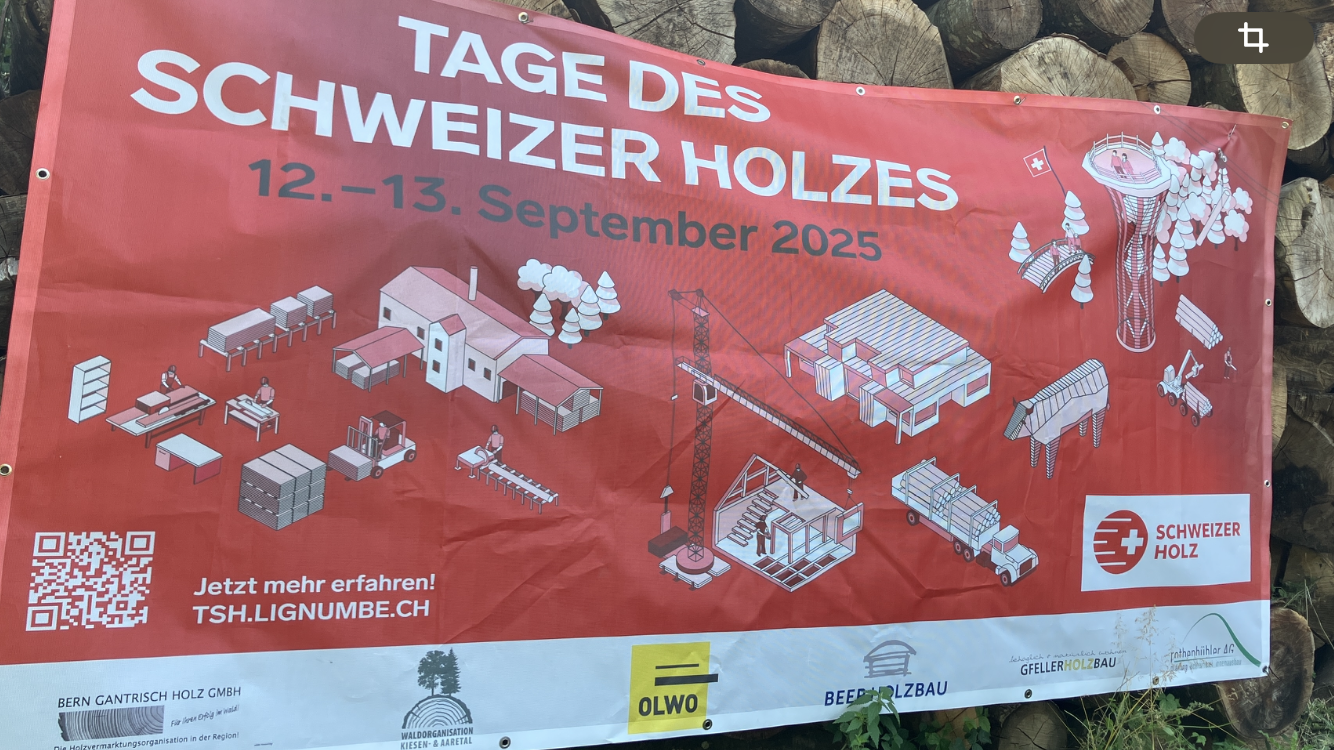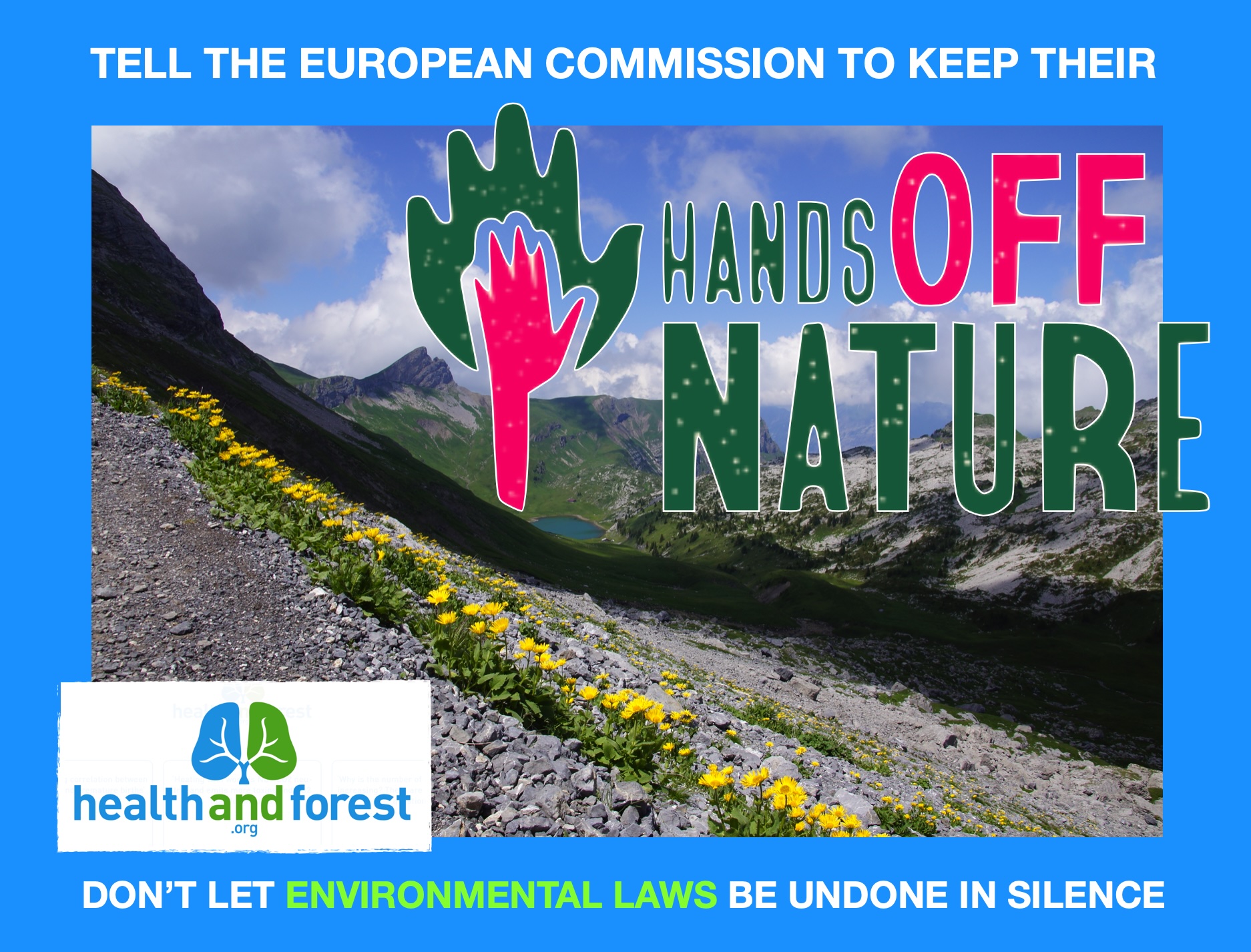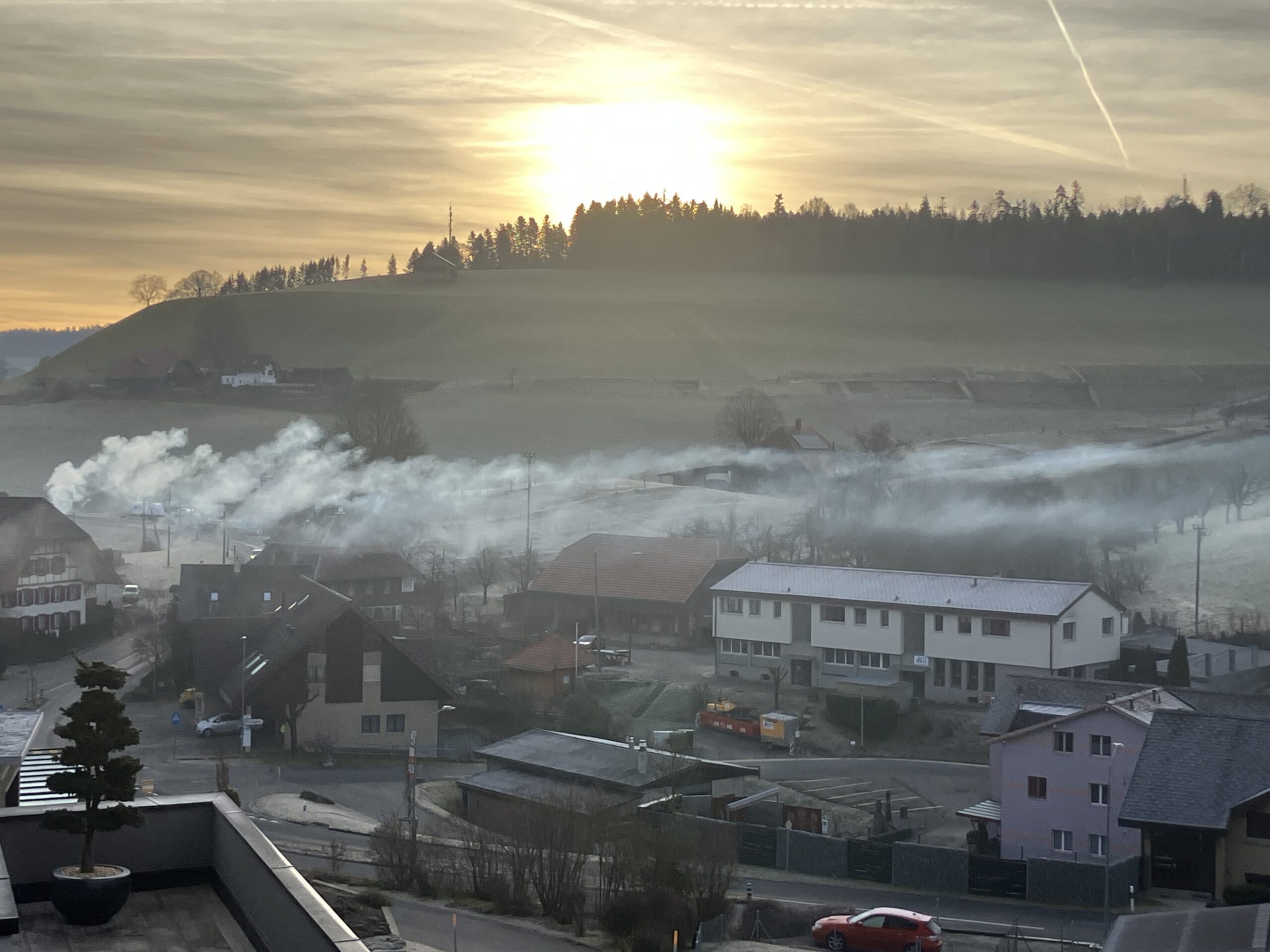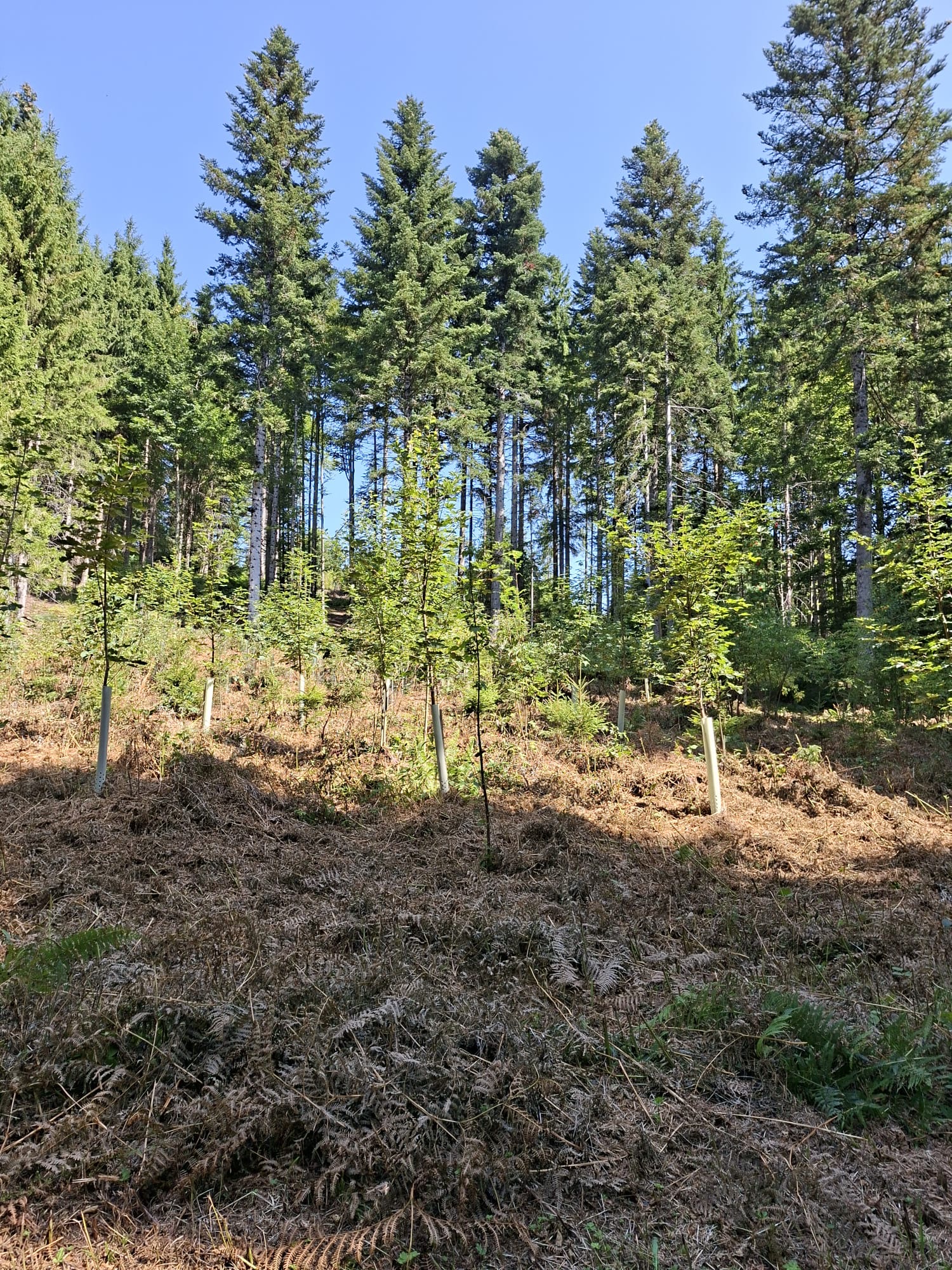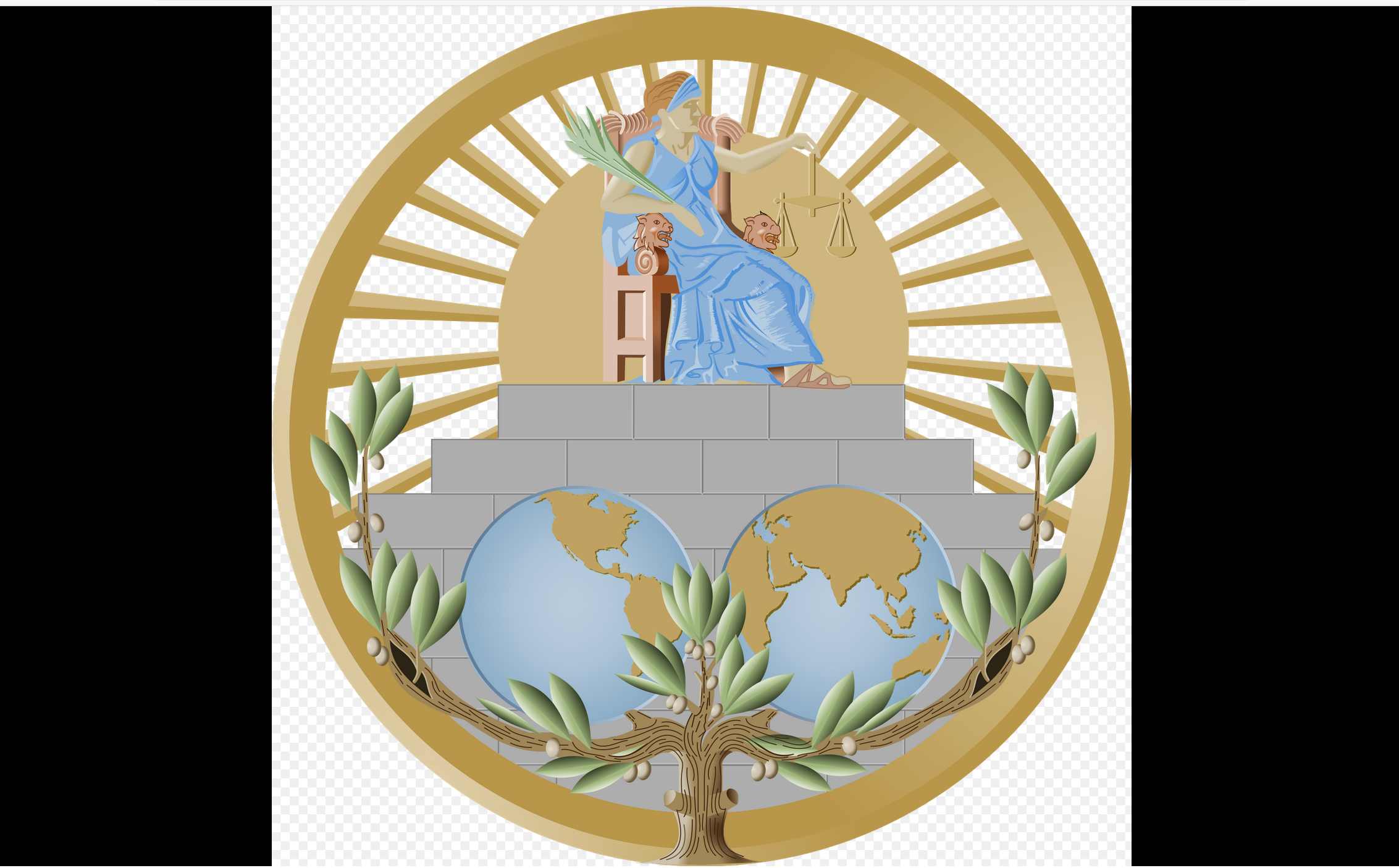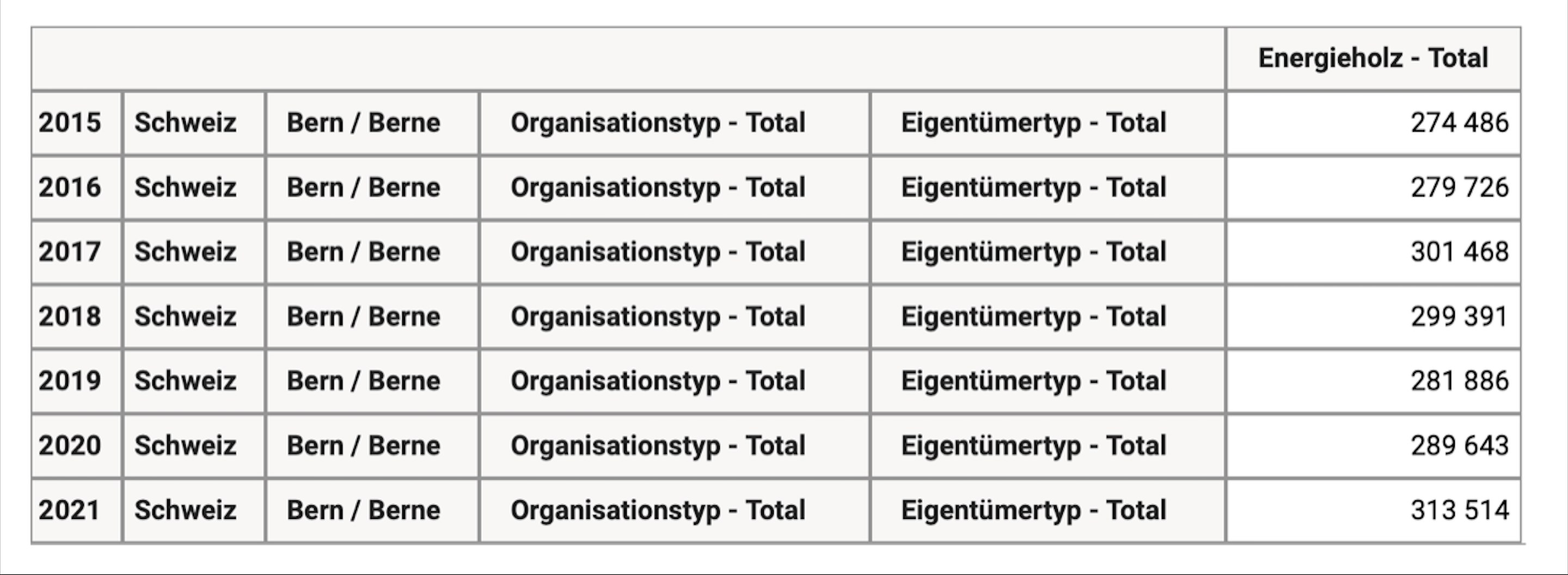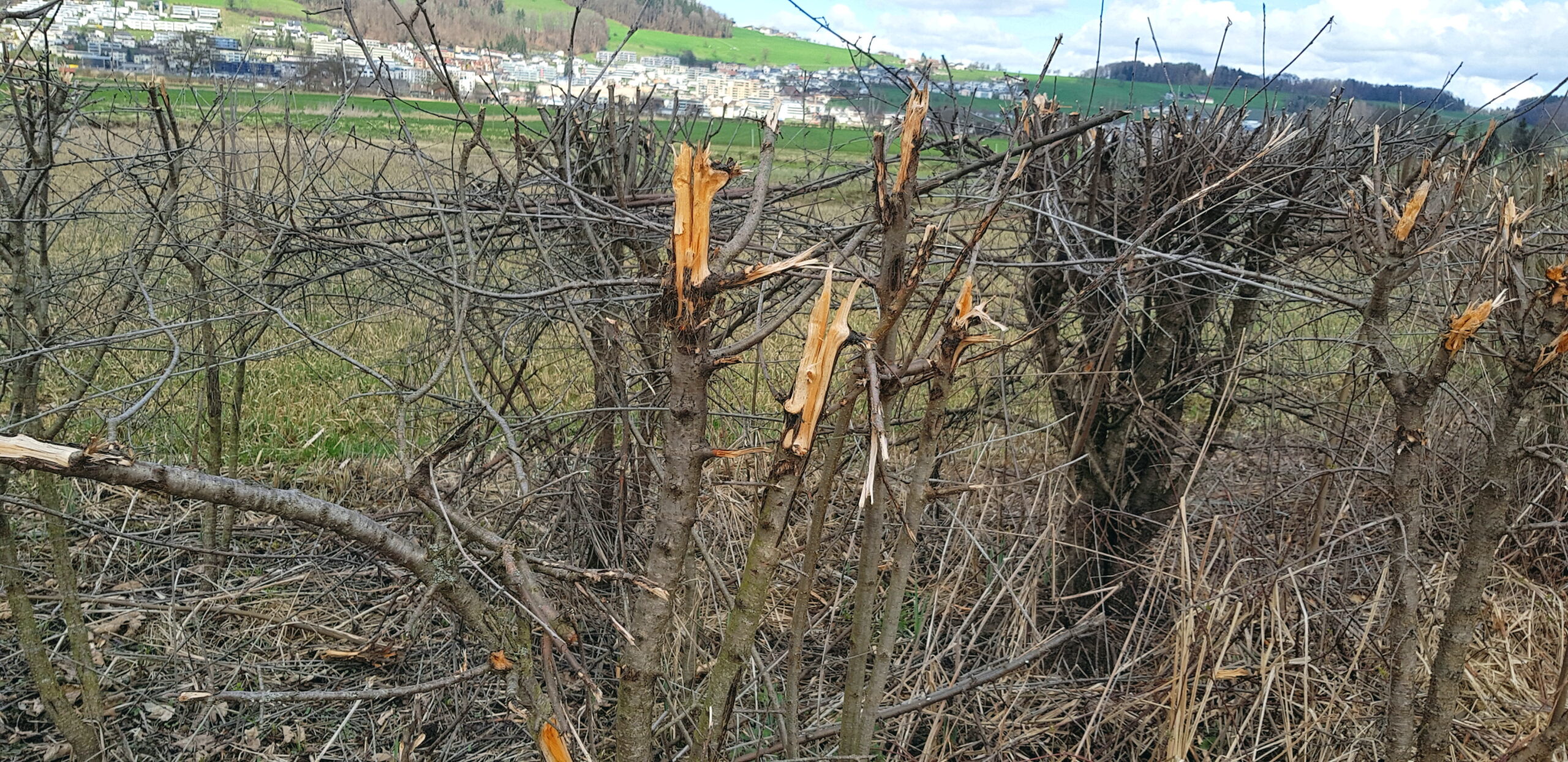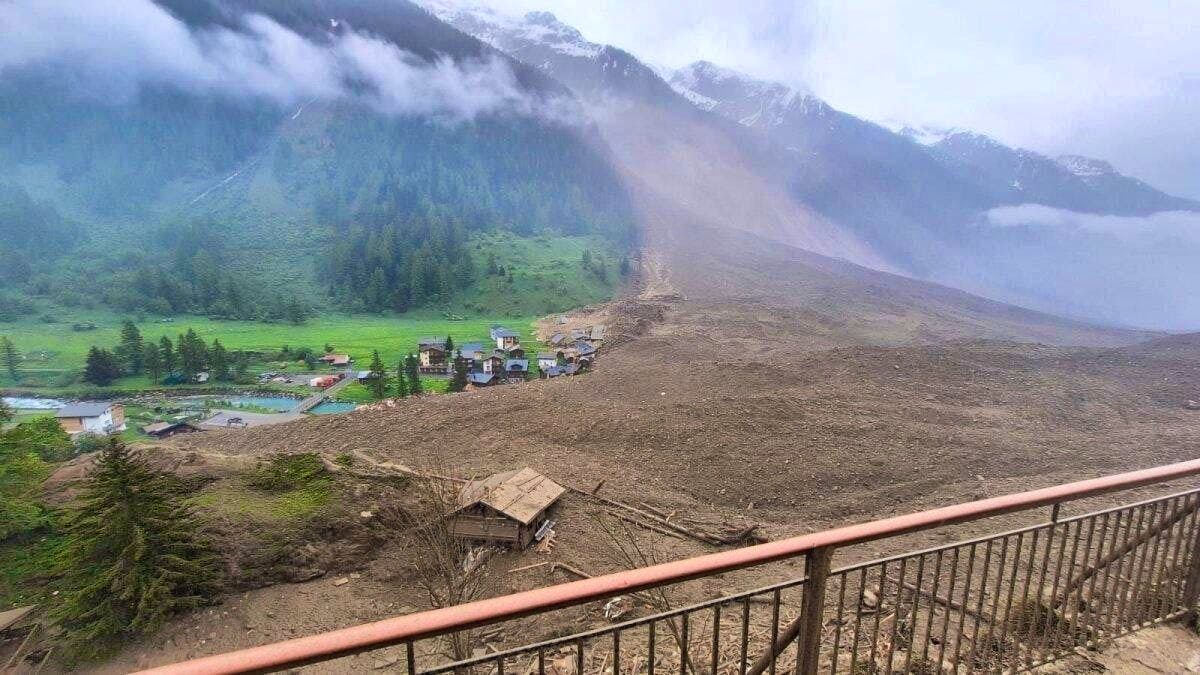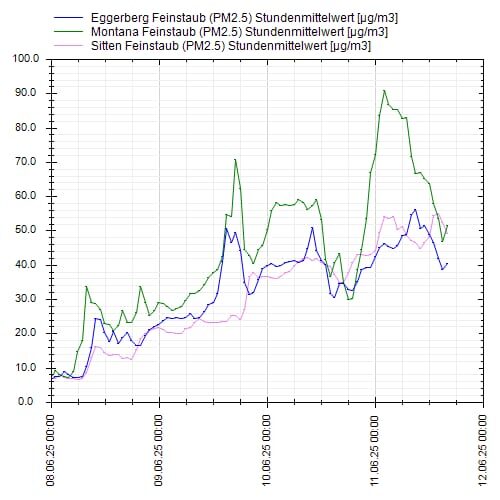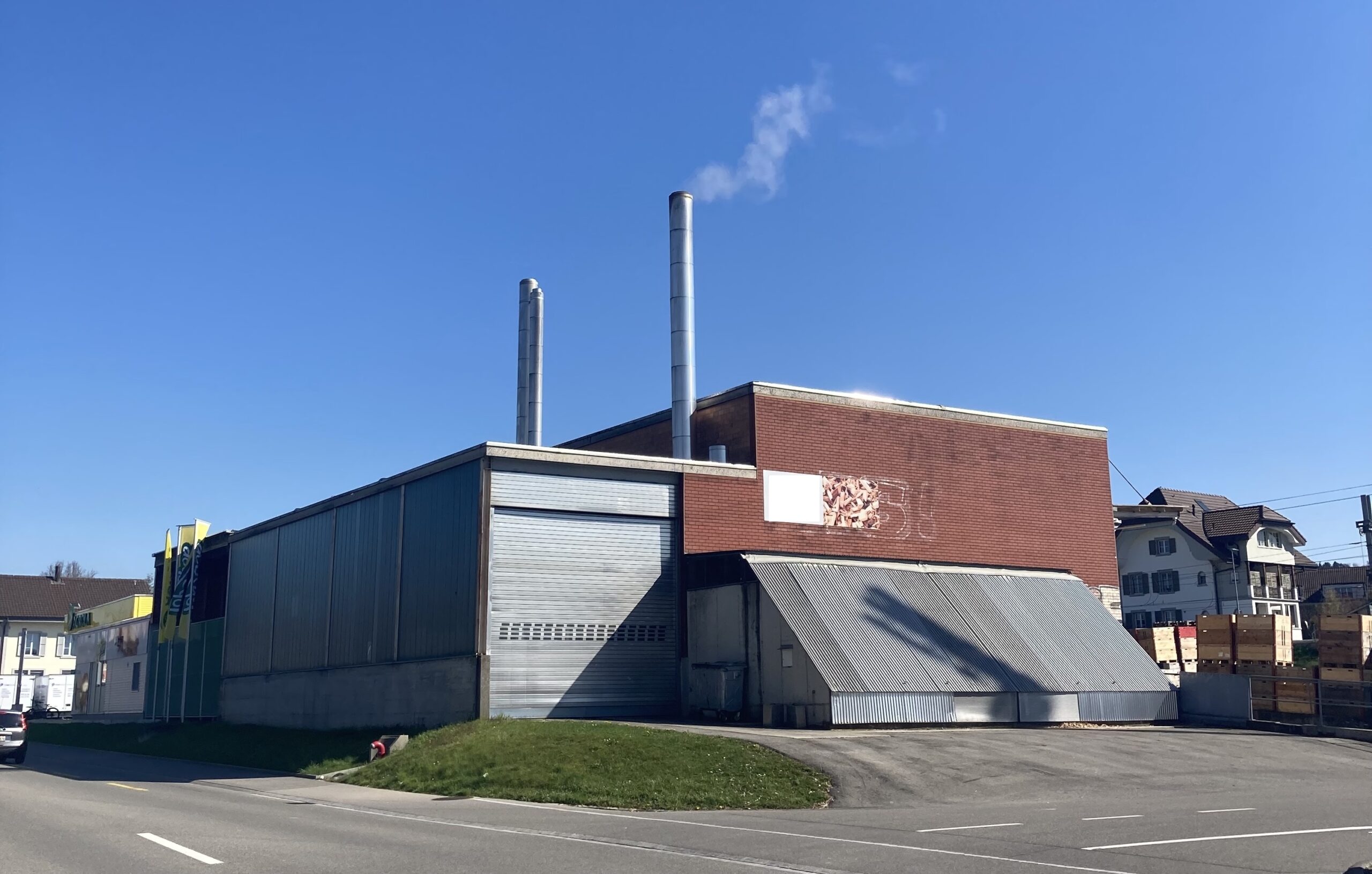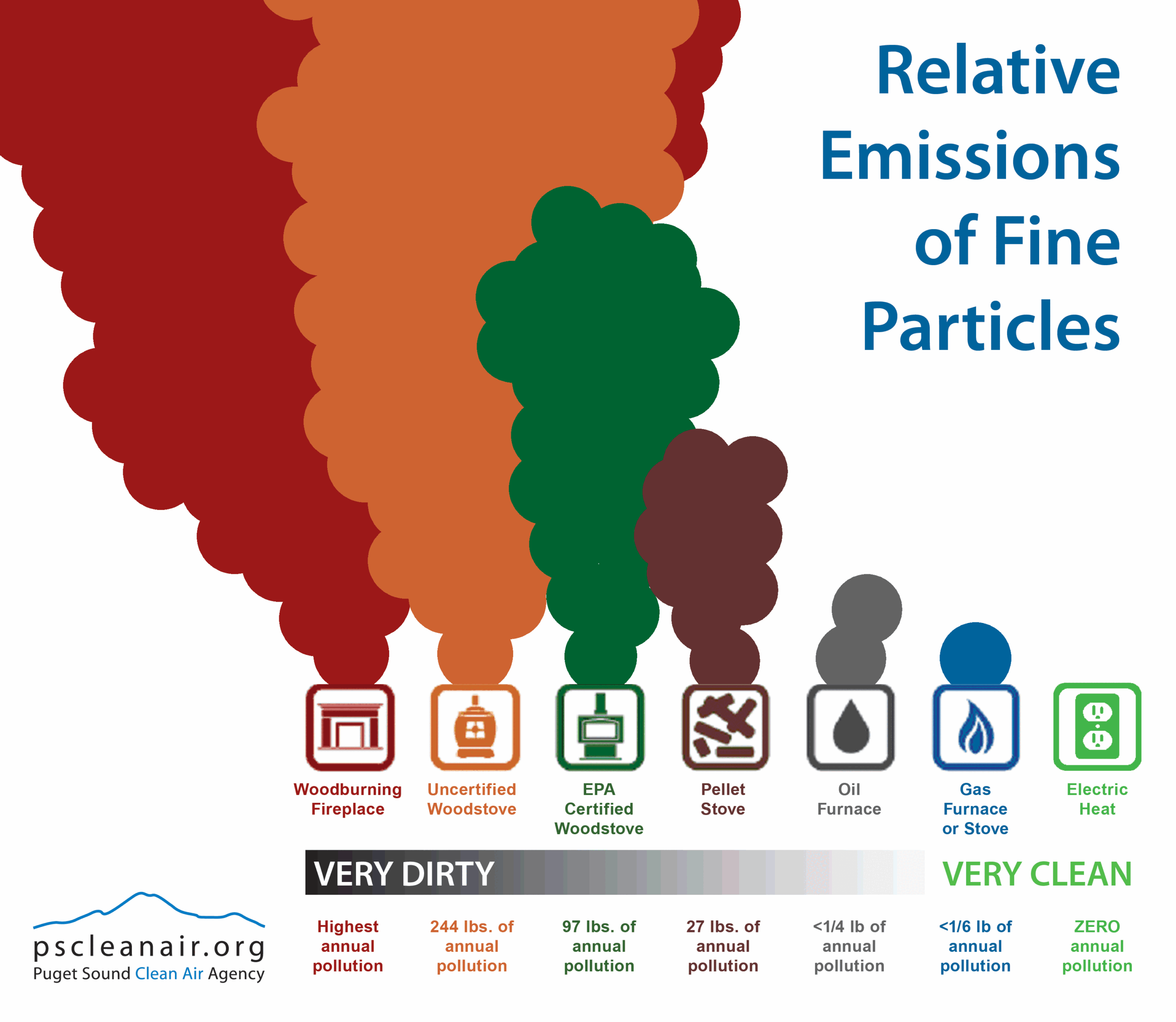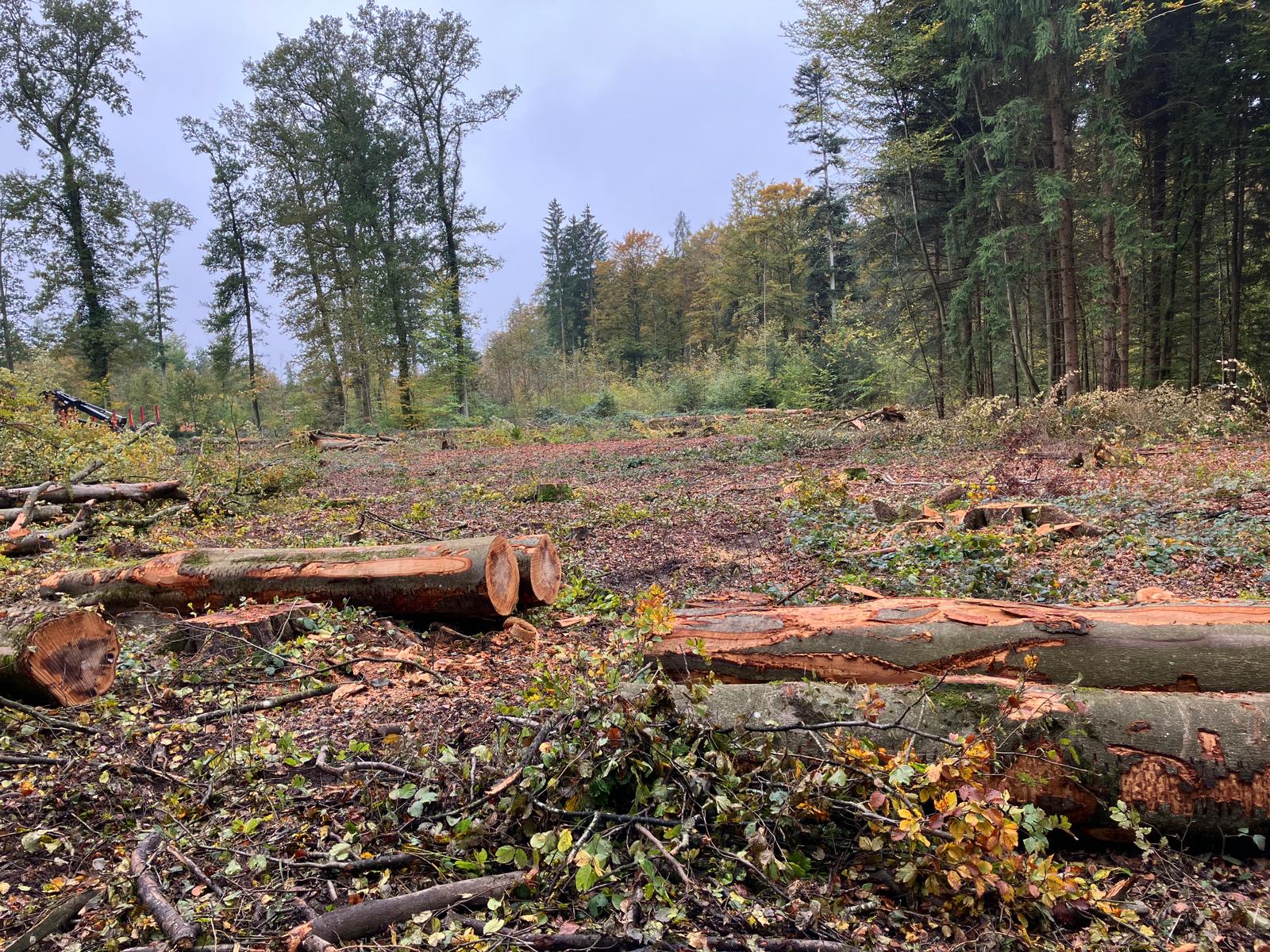Latest news national and international
We’ll keep you posted! Whether it’s current news, little-known information or interesting facts and figures relating to health and forests in Switzerland, you’ll find it here.
Visit us also on Linkedin, Facebook, Whats-App or Instagram.
Biofuels are more harmful than fossil fuels
There is a global trend, also in Switzerland, to replace harmful substances with others that are even worse. For example, fossil fuels are being replaced by wood combustion or biofuels.
Read our new article to find out why this is a step in the wrong direction and why biofuels are not the solution.
Burgergemeinde Bern: Greenwashing and misinformation about clear-cutting and so-called sick trees?
The timber lobby is increasingly reporting on supposedly diseased or old trees that need to be cut down. The City of Bern is also justifying clear-cutting in the Wylerwald forest on its Facebook social media channel – in a report full of misinformation and falsehoods. According to the City of Bern, beech trees are particularly affected by climate change: “the trees are rotting from inside”.
This is a blatant lie, which is immediately exposed by their own photo showing an old beech tree with heart rot as evidence.
Heart rot is a normal aging process. Hollow trees often remain very stable and are hotspots of biodiversity. In other countries, trees are even “inoculated” with fungi to induce precisely this type of rot.
It is therefore astonishing that the Burgergemeinde of Bern describes heart rot as a disease and convinces the population that the beeches must be cut down. In doing so, they are threatening countless organisms.
Photo: Burgergemeinde of Bern on Facebook, November 26, 2025
All secondhand smoke is harmful – but wood smoke is the most toxic
A few years ago, the tobacco industry ran one of the world’s most successful advertising campaigns for smoking.
Today, the wood lobby is using exactly the same tactics to promote wood burning. Just as with cigarette smoke back then, the massive harmfulness of wood smoke is being hushed up today. But the facts have long been clear: pollutants from wood burning, regardless of the wood heating system used, cause cancer 30 times more often than cigarette smoke, among other things. All it takes is one neighbour operating a wood heating system.
Read more about the interesting comparison between wood smoke and cigarette smoke here.
What to do with the ash from district heating plants? A hushed-up problem!
Burning wood in district heating plants and power stations not only emits vast quantities of pollutants and CO2, which are harmful to health and the climate, but also produces toxic ash. Tonnes of toxic ash. The waste incineration plant in the city of Bern alone adds 36% wood to the incineration process and produces 80,000 tons of ash annually – but what to do with it?
Read more about the hidden problem of ash here .
Wolves, health, forests: Federal Council disregards scientific evidence – and the people’s will.
When it comes to certain issues, the Swiss government prefers to make decisions that favour lobbyists rather than the well-being of the population and the urgent need to preserve nature.
3 examples:
Wolves: In 2020, the Swiss population voted in favor of maintaining the protection of certain animals (ibex/beavers), including the protection of wolves. Nevertheless, Federal Councillor Albert Rösti single-handedly allowed the preventive shooting of wolves. But now the International Union for Conservation of Nature (IUCN) is stepping in.
Health: The Swiss government promotes the burning of wood, even though all independent international studies prove this to be a fatal step backwards in the fight against climate change and strongly point to the health risks of wood burning .
Forests: The Swiss government and the Federal Office for the Environment promote the clear-cutting of intact forests under the pretext of climate-friendly forest management, even though no studies prove its effectiveness. On the contrary, all independent international studies prove the opposite.
New study: Even a small number of wood-burning heating systems increase healthcare costs and premature deaths:
Heating with wood is a technology from the Stone Age – primitive, inefficient and, as has now been scientifically proven, extremely harmful to health, the climate and the environment. Nevertheless, governments, including the Swiss government, promote this harmful energy source – with consequences that are being concealed. Even a small number of wood-burning heating systems cause high healthcare costs and approximately 60,000 premature deaths every year.
Read more here .
Are wood pellets the new asbestos?
Pellets are described as clean and ‘clean-burning’. However, they are far from it. Read here about the similarities between pellets and asbestos.
Brussels Parliament’s Environment Committee admits mistakes in wood burning policy
In Brussels, a petition by citizens against wood-burning stoves suceeded in convincing almost all parties in the Parliament’s Environment Committee of the harmful effects of wood-burning stoves.
After hearing the petitioners, the MP’s admitted that the issue of wood burning and its harmful effects had been overlooked in politics and that the existing regulations on the installation of wood heating systems were inadequate.
It was also noted that there is still a great deal of ignorance about the negative effects of wood-burning heating systems. MP Jonathan de Patoul admitted that he had had misconceptions about wood-burning heating systems before he looked into the facts about their harmful effects.
Before a ban on wood burning is imposed, the public should be informed about the risks of wood burning.
Utrecht to ban wood burning in private households from 2030 – primary heating systems also affected
Utrecht is phasing out wood burning by 2030 to improve air quality in the city. From now on, wood-burning heating systems are no longer permitted in new houses, and fireplaces are also banned with immediate effect. ‘Air quality has a major impact on health, and we want to take serious steps to improve it,’ says Eva Oosters, Utrecht’s environmental advisor. Inge Everhardus from the organisation Stichting Houtrookvrii also commented on the planned ban: ‘People burn wood because they find it cosy – but wood burning is much more harmful than generally assumed, and even modern pellet stoves emit a lot of particulate matter, ultrafine dust and soot.’
In response to the claim that banning wood burning restricts people’s freedom, Oosters explaines: Poor air quality restricts freedom just as much.
In Switzerland, wood burning is promoted and subsidised. The health risks, which are greater than those associated with passive smoking, are ignored.
Photo: Utrecht area / visitutrechtregion.com
Billions in subsidies for woody biomass – the false energy solution
Burning forests undermines emission reduction targets, threatens biodiversity, destroys forests and pollutes communities.
Nevertheless, billions in subsidies are paid to the timber industry worldwide for burning trees, which makes it impossible to achieve climate and nature conservation goals.
Read more about the alarming figures here.
Is Pro Natura helping the timber lobby?
Pro Natura, Switzerland’s most important nature conservation organisation, published a report on the Bernese State Forestry website in which it praises, among other things, Switzerland’s timber reserves. These have been steadily increasing for decades – by around 1.5 million cubic metres.
What Pro Natura fails to mention in the article is that timber reserves, regardless of their size, say nothing about the condition of the forests. Nor do they say anything about whether a forest ecosystem is intact, whether biodiversity is high or low and even less about whether a forest is managed in a natural and sustainable way.
The significance of ‘high timber reserves’ can be understood by looking at the examples of Germany and Austria: Germany has the largest timber reserves in the EU, and Austria is also among the European leaders. Nevertheless, the forests in both countries are in a disastrous state and have long since become CO2 emitters. The photo (Canton of Bern, Switzerland) also impressively shows what a protective forest can look like after a so-called “near-natural forest management”, despite high timber reserves – it is remarkable that Pro Natura doesn’t seem to be concerned about this.
International Day of Action On Big Biomass 2025
On 21 October, protests against large biomass projects will take place worldwide under the slogan ‘Clear-cut subsidies, not forests’.
Wood-fired power plants around the world burn forests for electricity or heat – including in Switzerland. Organisations and scientists around the world are warning that wood burning and pellet production have a drastic impact on forests, biodiversity and the climate.
The main message of this year’s day of action against biomass is: no subsidies, no tax breaks, no incentives for the biomass industry, as these promote its expansion and destructive effects around the world.
Look here: Environmental Paper Network
New study on the harmful effects of wood burning presented at the European Respiratory Society Congress
The European Respiratory Society Congress took place in Amsterdam from 27 September to 1 October 2025. At the conference, another study on the dangers of wood smoke was presented. Scientist Dr Laura Horsfall from London told the congress: We know that burning wood at home causes harmful air pollution both indoors and outdoors, including carcinogenic substances. Professor Ane Johannessen, head of the expert group, added that there is a growing trend in Europe to install wood-burning heating systems, but these cause asthma, COPD and lung cancer.
People who heat with wood should be aware that they are harming themselves and their families, even if they use modern stoves. Neighbours without wood-burning heating systems are also exposed to a significantly increased risk of serious illness, because even closed windows cannot protect against the pollutants. (So say 53 British health organisations, Asthma Australia and Tasmania)
600 football fields of precious green spaces lost each day in Europe
From 2018 to 2023, an area the size of Cyprus (9,000 km²) was lost to development.
That’s equivalent to 600 football fields … PER DAY… covered with asphalt, built on and filled with concrete.
Read more here
Federal Council misleads the public with inaccurate figures on wood combustion
Switzerland aims to become climate neutral by 2050 – among other efforts by replacing fossil fuels with wood combustion, which the Federal Council classifies as CO2 neutral. This is a misrepresentation in favour of the timber lobby.
The Intergovernmental Panel on Climate Change calculates CO2 emissions per megawatt hour (as quotes WWF Germany) :
Gas: 202 kg CO2, oil: 264 kg CO2, coal: 340 kg CO2, wood: 403 kg CO2
For methane, a very powerful greenhouse gas, and for dioxins, the most toxic chemicals to which humans can be exposed, the CITPA, an association of air pollution experts, calculates:
Per gigajoule: Coal: 1 gram of methane, 10 nanograms of dioxins; wood: 30 grams of methane, 40 nanograms of dioxins
Although methane decomposes much faster than CO2, it is a very powerful greenhouse gas: Over a period of 20 years, a single methane emission warms the atmosphere about 80 times more than the same amount of CO2. Over a period of 100 years, methane warms the atmosphere about 28 times more than CO2.
Such data raises serious questions about the operation and subsidisation of wood-fired power plants and wood heating systems.
Photo: Ecoenergy Valais
Swiss companies invest in forest destruction
Swiss retirement funds (Occupational benefits insurance) have invested at least 60 billion Swiss francs in companies primarily responsible for the destruction of tropical forests in South America, Africa and Asia. In doing so, they are not securing the future of their insured members, but rather destroying the foundations of life for all of us.
Yet not a single study has proven the benefits of climate-friendly forest conversion, which involves clearing hectares of intact forest. What has been proven, on the other hand, is that clear-cutting destroys intact soils, drinking water reservoirs, biodiversity and CO2 sinks, and further exacerbates heat and drought. Read more here.
However, corporations are also investing in the destruction of Swiss forests. Berner Kantonalbank and Coop are just two of countless companies investing in climate-friendly forest conversion – purely greenwashing.
Photo: Climate-friendly forest
Wood shall no longer be considered “renewable”!
In Germany, the Federal Cabinet approved the draft bill to amend the Energy and Electricity Tax Act in the week of 1 September.
In the draft bill to amend the Electricity Tax Act, biomass, i.e. wood and biogas, is NO LONGER considered as RENEWABLE.
Only hydropower, wind power, solar energy and geothermal energy are to be considered renewable energy sources for electricity generation. If this amendment is approved by the Bundestag, wood-fired power plants will be treated in the same way as coal-fired power plants.
Of course, biomass experts describe this as ‘insane’, but facts and science are clear: due to high demand, wood can no longer be classified as renewable. In addition, it emits more CO2 than fossil fuels when burned, and the additional pollutants emitted are highly harmful to health (insane).
Health damage caused by smoking is passed on through generations
A study shows that children whose fathers were exposed to passive smoking before puberty have a higher lifelong risk of lung problems. They often have below-average lung function and are more likely to develop COPD. This risk exists even if the father himself does not smoke. The harmful effects of smoking can therefore be passed on across generations!
Alarming: Many fathers were exposed to wood smoke in the past – one of the dirtiest and most harmful ways to heat, which, paradoxically, is increasingly being used again today. Wood smoke is more harmful than cigarette smoke, and so (even with the most modern, ‘filtered’ wood heating systems) you are not only harming yourself, but also your own children and grandchildren.
Wood smoke is harmful to your health!
Absurd exports of Swiss timber
Every year, around 4–5 million cubic metres of timber are harvested in Switzerland (more on this here). Of this, up to 2.6 million cubic metres are burned.
During the same period, we export up to one million cubic metres of round timber – in some cases a quarter of our total usage.
A large proportion of the exported timber is processed in Asia, particularly in China, into glued panels (concrete formwork) and furniture.
Some of this then returns to Europe as finished or semi-finished products.
This is not only ecologically absurd – due to long transport routes and unnecessary emissions – but we also lose the added value of a local resource.
It is as if we were shipping our milk to China and then importing cheese back from there.
Swiss Wood Days: Wood lobby forgets the most important thing on its advertising banner
Wood being processed, transported, stacked, sawn and used for construction – all of this can be seen on the advertising banner for Swiss Wood Days on 12–13 September. But the most important thing is missing: smoke billowing from chimneys, causing illness.
A shocking 74% of the hardwood felled ends up directly in wood-fired power stations, incinerators or private wood-fired heating systems. Wood burning is advertised using terms such as ‘natural’, ‘sustainable’, ‘renewable’, ‘CO2-neutral’ and even ‘healthy’.
All of this has been proven false. Apart from the maximum damage to the climate and nature, burning wood, even in the most modern heating systems, is the dirtiest and most harmful way to heat.
Even building with wood is becoming a threat to forests due to an increase in large-scale projects.
Wood is not sustainable per se!
Click on the image for full size
The European Commission wants to quietly and secretly roll back important environmental protection measures.
Forests are thinning, rivers are drying up, wildlife is disappearing. We are losing clean air, clean water and the green spaces we depend on. And yet European laws that protect our natural environment are being quietly abolished under the false pretext of ‘simplification’.
Our nature is being destroyed!
Call on them to keep their hands off nature! Sign here by 10 September!
Without nature, there is no life! Join us!
Read our article here on the planned weakening of nature conservation laws and lowering of environmental standards.
Warning about the harm of pellets
California is leading the way by placing health warnings on pellet packaging, similar to those already found on cigarette packets.
With good reason, because the pollutants produced by burning wood are more harmful to consumers and neighbours in the immediate and wider vicinity (depending on wind conditions) than cigarette smoke.
The text on the pellet packaging reads: ‘Handling and burning this product exposes you to carbon dioxide, soot, fine dust and other chemicals known to the State of California to cause cancer, foetal malformations and other reproductive disorders.’
But that’s not all: we now know that the pollutants from wood combustion cause countless diseases in adults and children. The list of new diseases proven by studies is growing almost daily.
In Switzerland, the Federal Office of Public Health remains silent on the dangers of wood smoke, and the government even promotes and subsidises the burning of wood.
Click on image for full size
Neighbour’s heating system is a polluter: Successful lawsuit against smoke and odour nuisance from heating system
A homeowner in Lower Saxony, Germany, took legal action against his neighbour, who operated a certified oil-wood combination heating system. The plaintiff and other neighbours argued that burning wood produced significant odour and smoke emissions.
After the plaintiff had been dismissed by the court of first instance on the grounds that the problem could be solved by burning the wood cleanly and more efficiently, the court of second instance ruled differently:
Wood smoke is a significant and unreasonable nuisance. In addition, large quantities of unburned hydrocarbons, tar oils and also abundant soot and dust are produced, according to the court.
The perpetrator was instructed to refrain from causing smoke or to use oil heating instead.
Wood-burning heating systems and pellet systems emit countless pollutants that are more harmful than cigarette smoke and cannot be protected against even by closed windows.
Photo: Symbolic image / Canton of Bern
Wood smoke can cause cerebral haemorrhages
Air pollution (especially particulate matter pollution) is known to be the greatest health risk and is responsible for many diseases in adults and children.
A study by the University of Utah Health now shows a possible significant increase in cerebral haemorrhages, which can lead to death and disability, 3–6 months after measuring peak levels of PM.
Particulate matter of 2.5 and less enter the body through respiration and cause damage that can also weaken the walls of our brain and cause them to rupture, explain Robert Rennert (neurosurgeon and head of the study) and his team.
Wood combustion is the number one air pollutant in Europe. In Switzerland, the authorities refuse to measure air quality in places with wood heating systems and pellet plants, where we measure PM 2.5 levels of up to 1000µg/m3 (WHO limit value 5µg/m3).
The Federal Office of Public Health remains silent about the dangers of wood smoke – even though it is more harmful than cigarette smoke, affects almost the entire population and has been the subject of tens of thousands of studies.
Photo: Robert Rennert, neurosurgeon at the University of Utah Health / Click on the image to view it in full size.
Light, pesticides and string trimmers in the forest
‘Bringing light to the forest ground’ – even Federal Councillor and Environment Minister Rösti uses this phrase to justify clear-cutting for energy wood.
A statement that could not be any more wrong. Too much light and heat on the forest floor reduces the number of microorganisms in the soil, thereby altering the availability of essential minerals for a healthy forest. In turn, blackberries become a nuisance. A nuisance that is combated several times a year with string trimmers and highly toxic pesticides, mostly glyphosate.
As a total herbicide, glyphosate destroys almost all wild plants.
The result: loss of habitat for insects and negative effects on other animals such as birds and bats that feed on insects. In short, biodiversity is being destroyed.
‘Bringing light to the forest ground’ means nothing but damage – except for the timber lobby.
Photo: Pesticide use on the Gibelegg / Canton of Bern
The city of Schwerin stops construction of wood-fired power plant due to forest destruction, CO2 emissions, and air pollution
The City council, Green Party, UB/FDP, Left Party, CDU, and citizens reject the construction of a wood-fired power plant in Schwerin-Wüstmark.
The reasons given for halting construction are:
- Wood is not climate-neutral when burned. Burning wood emits more CO2 than fossil fuels.
- Deforestation is advancing.
- Biodiversity is endangered.
- Even waste wood is not climate-friendly and should be recycled rather than burned.
- Air pollution is increasing.
Many other places are also fighting against wood-fired power plants or stopping them for the same reasons.
But not in Switzerland: here, politicians and lobbies are pushing for the expansion of wood burning with greenwashing and disinformation – even though the above mentioned issues are scientifically proven.
Poor grades in mathematics and English in the context of increasing air pollution
The higher the concentration of particulate matter, the worse children perform in maths and English exams. This worrying link between school performance and air pollution has now been confirmed by a study from the Yale School of Public Health, which analysed data from over 2.8 million pupils in public schools.
The results show that with every measurable increase in PM 2.5 fine dust particles (which make up a very significant part of air pollution), children’s performance in exams deteriorates.
The World Economic Forum’s Global Future Council on Clean Air is alarmed.
Fatal: In Switzerland, schools are often heated with wood heating systems, pellet systems or wood-fired district heating systems, which are the number one air polluters in Europe.
Swiss climate policy violates international law
The International Court of Justice in The Hague has just made the following announcement: A clean, healthy and sustainable environment is a human right. Governments can be held accountable for policies that harm the climate.
Almost in the same move, Switzerland has decided that deforested areas will no longer need to be reforested. In addition, energy wood harvesting is to be increased by over 200% in the canton of Bern alone.
The Federal Council wants to achieve climate neutrality through wood combustion, even though this emits more pollutants and CO2 than fossil fuels.
Together with the so called climate-friendly forest management, which is not supported by a single study, this leads to more heat, more drought, less drinking water, fewer CO2 sinks, less clean air and less biodiversity for the population.
Questionable statistics on Swiss timber harvesting
Media and Federal Government are reporting a further decline in logging in Swiss forests in 2024, following on from 2023. These figures are misleading: Around Bern alone, 500 hectares are currently being cleared for ‘climate-friendly forestry’, and a study commissioned by the Office for Forest and Natural Hazards shows that in the canton of Bern alone, 700,000 to 1,000,000 million cubic meters of energy wood can be harvested per year in future.
This represents an increase of 123% (more than double!) and 219% (more than triple!) compared to 2021 (see table).
These figures only refer to wood chips and firewood and do not include pellets or other types of energy wood. So there can be no talk of a decline.
This is disastrous for forests and the climate – especially since burning wood emits more CO2 than fossil fuels.
(Table: Federal Statistical Office. Click to enlarge)
Wood burning appears to play a greater role in non-smokers’ lung cancer than passive smoking
Lung cancer is increasingly affecting people who have never smoked. A fourth of all lung cancer cases is diagnosed in non-smokers. The German Medical Journal has now published a Study by the University of California on this topic. The researchers found out that air pollution is more carcinogenic than passive smoking.
Burning wood in biomass power plants for electricity and district heating, as well as in wood heating systems, is the number one source of air pollution in Europe, far surpassing traffic. Burning one kilogram of wood emits as many pollutants as 27’333 cigarettes.
A single wood heating system is enough to poison an entire neighborhood in a way that is harmful to health.
In almost all European countries, health organizations are fighting for a ban on wood heating systems. Only in Switzerland the danger is being concealed.
Photo: German Medical Journal
Questionable hedge maintenance at Wauwilermoos, a nature reserve of national importance.
Located in the canton of Lucerne, Wauwilermoos is a nature reserve and the site of a pile dwelling settlement dating back almost 20,000 years. It is also an amphybian spawning ground of national importance and a lowland moor of national significance. The area is home to a water and migratory bird reserve of national importance, most of which is used for farming.
Wauwilermoos is the largest breeding area for Northern lapwings in Switzerland. The area is also home to 120 species of wild bees.
The disastrous hedge trimming that borders the nature reserve is incomprehensible. All the more so as a poster next to it advertises the enhancement of nature.
Two wood-fired power plants must cease operations immediately
Environmental groups are demanding that the senseless burning of over 250,000 tons of forest wood per year in the two wood-fired power plants operated by Stadtwerke Leipzig be stopped immediately.
Ida Nihus from the “180° Wärmewende Leipzig” campaign explains: “Forests are our most important allies in climate protection. Burning them is irresponsible. So it’s not just forests that are being burned, but also taxpayers’ money and our future. We demand the immediate closure of the two power plants.”
It is further emphasized that wood-fired power plants emit CO2 without interruption, which is a disaster for the climate. In Switzerland, countless wood-fired power plants are in operation and countless more are in the pipeline – despite the obvious problems they entail: high CO2 emissions and destruction of forests.
People in France are taking to the streets to protest against the construction of a pellet factory
In Salins-les-Bains, in the French Jura region, there are plans to build another pellet factory that would consume 122,000 tons of wood per year. But now the population has had enough! Even without the newly planned biomass power plants, France already burns 68% of the wood harvested. The result: clear-cutting, loss of biodiversity, and even more CO2 emissions (wood combustion emits more CO2 than fossil fuels).
In Switzerland, too, there are countless wood-fired power plants that generate electricity and heat. In our opinion, the clear-cutting required for this is legitimized by climate-friendly forest conversion, which lacks any scientific basis. Switzerland already burns 74% of the hardwood harvested. Although around 100,000 tonnes of pellets had to be imported in 2022, the proportion of energy wood is set to increase further
Increasingly unstable slopes: due to climate change or forest management?
Landslides and debris flows are the result of climate change. The fact that forestry is responsible for this in many places is being concealed. Under the guise of protection forest maintenance much larger areas of forest are being cleared than permitted by the legally binding NaiS guidelines (600m2-1200m2 felling in protection forests). With devastating consequences: The roots will rot after a few years and the slopes will start to slide.
Just 2 examples
Landslide Schwanden/ Glarus: Deforested area of 13 hectares (look at latest news national and international, November 22, 2024)
Landslide Belp / Bern: Deforested area over 1200m2 (photo)
Victory in Mississippi against Drax, the world’s second-largest pellet manufacturer
Protests against the production of wood pellets are growing worldwide. The production and burning of pellets is responsible for deforestation, extreme air pollution and countless diseases worldwide. This includes the company Drax, the world’s largest importer of wood pellets and the second-largest pellet manufacturer, which has violated environmental regulations over 11,378 times since 2014. This is now coming to an end – at least in Gloster, Mississippi. Under pressure from the organisation ‘Greater Greener Gloster’, the permit to expand the pellet production plant has now been denied. A victory from Mississippi via Alabama to Georgia and North Carolina.
In Switzerland, wood heating systems are subsidised even though they are the most harmful of all heating systems for health, climate and environment.
Forest and energy policy continue to heat up the climate – although heat is considered the greatest risk for health
As climate change progresses rapidly in Switzerland, heat has a particularly devastating effect on the population. It is the most fatal climate hazard and must be urgently combated by reducing greenhouse gas emissions. This is the conclusion of a new report by the Federal Office for the Environment (link)
However, the current forest and energy policy continues to heat up the climate.
Wood heating systems and wood-fired power plants are promoted and subsidised, even though wood is worldwide no longer classified as sustainable and renewable and although the burning of wood emits more CO2 and pollutants than fossil fuels.
Wood-fuelled district heating plants require immense amounts of wood, which necessitates large-scale clear-cutting, which in turn promotes drought, slope instability and heat.
Blatten / Lötschental: Are the statements by Federal Councillor and Environment Minister Rösti true?
Federal Councillor and Minister of Environment Albert Rösti assures the population at the site of the disaster that this is a “1 in a 1’000 years event”
But: in 2017, a rockslide destroyed the village of Bondo in the canton of Graubünden. In 2023, a huge landslide in Brienz / canton of Graubünden stopped just at the borders of the village.
For scientists, it is clear that climate change must have played a role alongside many other factors.
But Federal Councillor and Minister of Environment Rösti is heating up the climate even more with his current forest and climate policy. He promotes wood heating systems and wood-fuelled district heating even though burning wood emits more CO2 and pollutants than fossil fuels and has been proven to damage forests.
And the unscientific ‘climate-friendly forest conversion’ also increases heat and drought.
You can find out more about the Birch Glacier here
Measuring extremely high and harmful particulate matter levels – not a single authority is warning of the dangers
For several days now, extremely high levels of particulate matter have been measured due to the forest fires in Canada. Depending on the location, levels exceed 100µg/m3 – levels that are extremely harmful to health.
Nevertheless, not a single authority is warning the population and urging them to spend as little time as possible outdoors, to avoid exertion outside, and to keep windows closed as much as possible.
This is negligent, considering that the WHO has set the limit for fine dust at 5µg/m3 and explicitly states that there is no safe lower limit.
Click on the photo to see the entire graphic.
Wood smoke is toxic – whether it comes from wildfires or fireplaces
Wildfire smoke is some 10 times more toxic than air polluted from burning fossil fuels
The Paul Scherrer Institute PSI concludes that not only the quantity of particulate matter puts our health at risk, but the type of pollution source plays a major role as well. Burning wood produces the most harmful particulate matter.
So why should people be advised to close their windows and stay at home during wildfires, while heating with wood is promoted and subsidized?
Read more about the dangers and prevention of wildfires here
Summer: campfires, charcoal barbecues, fire bowls – children smoke thousands of cigarettes
Many parents and children look forward to the barbecue and campfire season in summer. But this tradition has fatal consequences. We now know that wood smoke is thirty times more carcinogenic than cigarette smoke. Burning 1 kilogramme of wood emits the same amount of carcinogenic benzo(a)pyrene as lighting 27,333 cigarettes. And you don’t even have to light a fire yourself. If you smell wood smoke of a neighbour’s charcoal barbecue or fire bowl, you automatically become a passive smoker. This means that children are also exposed to extremely harmful pollutants all year round: In winter from wood heating systems, in summer from wood barbecues, fire bowls and campfires.
Wood heating systems massively harmful to health – 53 health organizations raise the alarm
Burning wood emits similar harmful substances as tobacco – only in much larger quantities. This is why 53 British health organizations are calling for a ban on wood heating systems in an open letter to the Minister for Housing and Planning.
Wood heating systems present an extremely high risk to health. Even if they are only used as a secondary heating source, they cause countless diseases, including dementia, cancer and cardiovascular diseases.
For example, people using a wood-burning heating system have a 70% higher risk of developing lung cancer. Even if you only use your wood-burning stove once a week, the risk of breast cancer increases significantly
Studies show that harmful fine dust particles are not only found indoors, but also in neighbors’ homes and in the air outside. This means that even people without a wood-fired heating system are unintentionally exposed to a significantly increased risk of serious illness.
Cantons and Municipalities may disturb breeding birds – private individuals are fined with imprisonment
Anyone who renovates his home during the breeding season must comply with strict legal regulations to avoid disturbing birds while they are breeding. Anyone who does not comply with these rules can expect a heavy fine or a prison sentence of up to one year.
Although the law clearly provides for the protection of birds in the forest during the breeding season, the canton of Bern and the Burgergemeinden clear the forest during this time with harvesters weighing several tonnes and do not even stop at protected areas, such as here in the Suldtal (see photo)
Although the Sempach Ornithological Institute is particularly concerned about protecting birds during the breeding season when renovating houses, it does not intervene even when clear-cutting 10 hectares of forest during the breeding season.
Asthma Australia and Lung League Tasmania call for ban on wood heating systems
After the Asthma & Lung League of Wales called for a ban on wood-burning heating systems, Australia and Tasmania are now following their example.
“Every new wood-burning stove can put the health of local residents at risk. In addition to the 1 in 9 people with asthma in Australia, pregnant women, aged people, infants and young children are more likely to be affected by health problems caused by their neighbors’ wood smoke. The pollutants in wood smoke also contribute to diseases such as heart disease and dementia,” says Asthma Australia
More and more health organizations around the world are calling for a ban on heating with wood because the health risk from the pollutants from burning wood is at least as high as that from passive smoking.
Burning wood also emits more pollutants and CO2 than fossil fuels, according to the German Federal Ministry for Environment, Nature Conservation, Nuclear Safety and Consumer Protection.
The Federal Office for the Environment now wants a warning system for droughts they are partly responsible for!
“Drought is becoming an increasingly frequent natural hazard,” says Paul Steffen, Deputy Director of the Swiss Federal Office for the Environment FOEN. Climate change is to blame. (SRF News May 9, 2025)
What Mr. Steffen does not say is that the FOEN is partly responsible for the increasing drought in Switzerland.
Under the guise of climate-friendly forest management, hundreds of hectares of intact forests are being cleared for energy wood. However, forests are our most important allies in the fight against climate change – because forests make the climate.
Excessive forest management dries out the soil, results in less rain, cools the air less, increases the heat even in cities, causes even more glaciers to melt and streams to dry up – all in all, the drought will increase. But all that matters is that there is an early warning system.
Photo: Clear-cutting for energy wood – Bafu supported drought.
Asthma & Lung League of Wales call for ban on wood-burning stoves
In Wales, wood-burning stoves (including the latest Ecodesign stoves) are to be banned because they are harmful to health and the environment. Heating with wood is just as dangerous as passive smoking and causes countless illnesses. According to the Asthma + Lung League, residents who do not have a wood-fired heating system are also at risk, as no one can protect themselves from the pollutants – not even with closed windows.
Another reason for the proposed ban is that, other than claimed, burning wood is not CO2 neutral, heats up the climate and destroys forests and nature.
It is particularly worrying that less than half of those interviewed did not know about the dangers of wood heating systems, according to Joseph Carter, head of Asthma + Lung UK Cymru
In Switzerland, wood heating systems and wood-fired district heating systems are promoted and subsidized despite evidence that they are harmful to health, climate and environment. The Federal Office of Public Health and the Lung and Cancer League remain silent about the problem.
Report Asthma + Lung UK Cymru
Pyrolysis: Heating against climate change – dangers are veiled!
Pyrolysis heating was praised to the skies as a new technology and CO2-negative heating system in „Der Bund“ on April 28th 2025.
Now that many surrounding countries are introducing a ban on wood heating systems, a new, so-called climate-neutral and harmless trend is needed.
However, the production of biochar produces heavy metals, dioxins and furans (the most toxic chemicals you can be exposed to) and carcinogenic PAHs. All of these toxins end up in the soil, in nature and thus also in our food chain.
The production of biochar requires an enormous amount of energy and raw materials. The consequence: even more forests (urgently needed ecosystems for our survival) are destroyed.
Heating with wood, in whatever form, is neither CO2 neutral, sustainable nor renewable and harms biodiversity.
You will soon be able to read more about the topic of biochar under the heading “we uncover” (a link will be added to this message)
A panel of experts on forest protection instead of a forest inspection with the forestry lobby
The Fondation Franz Weber and the IG Berner Wald are hosting an event: This Friday May 2, 17:30 – 20.30 at the Allresto Congress Center, Effingerstrasse 20, 3008 Bern (City West building).
Find out why our forests are really under pressure and discuss with experts who see our livelihood, the complex forest ecosystem, as more than just a supplier of wood.
Admission is free.
Companies operating wood-fired power plants lie to the public about climate and environmental damage
What is already clear worldwide is now confirmed once again in an informative document written by several environmental organizations to oppose a wood-fired power plant in Cuxhaven: Burning wood to generate heat and electricity is NOT CLEAN AND RENEWABLE ENERGY, contrary to what wood-fired power plant operators, authorities and politicians say. On the contrary: burning wood emits at least as much CO2 as charcoal.
In Switzerland too, government, authorities and the wood-burning stove industry are pushing “sustainable, ecological and renewable energy” and promoting more and more wood-fired district heating or pellet systems. Even in the case of Cuxhaven, the money for construction would come primarily from Switzerland.
In addition, many operators of district heating plants are no longer able to cover the demand for wood supplies from the much-vaunted proximity and have to rely on imports from abroad – at the expense of ecosystems elsewhere.
Pollutants from wood burning cause depression: WHO refers to new study
A new study has found that particulate matter (PM2.5), carbon monoxide and sulphur dioxide significantly increase the risk of developing depression. The risk is further increased considerably when all three pollutants combine – as is the case with wood burning.
Based on these data, the WHO makes it clear that air pollution is the greatest external risk to human health worldwide – and that includes Europe, where wood-fired heating systems are the number one air pollutant despite filters and new systems.
Photo: Trade journal Environmental Science and Ecotechnology
10 hectares of clear-cutting during the breeding season? No problem for the Swiss Ornithological Institute.
It is a crime against nature to disturb breeding birds or even worse destroy their broods.
In 2023, 10 hectares of forest have been cleared on the Nidauberg (photo) during the breeding and settling season, causing massive disturbance and damage to nesting birds and mammals (especially bats).
It is absolutely incomprehensible that a bird protection organisation is in favour of this! The Sempach / Lucerne / Switzerland Ornithological Institute speaks of ‘a welcome intervention from which many light-loving species will benefit’.
The Swiss Ortnithological Institute was unable to answer the question of how many and which nesting bird species were disturbed/destroyed during this logging – although there are maps that show this in great detail.
Success story ‘Development of particulate matter’. Federal Office for the Environment FOEN tells a misleading story
The FOEN has published a video on LinkedIn showing the development of particulate matter in Switzerland between 1998 and 2023. ‘A success story’ is the headline.
Indeed, particulate matter levels in Switzerland have improved. Nevertheless, the following facts are worth knowing:
The improvements are mainly due to improvements in particulate filters in the car industry and not, as is often said, because wood is used for heating.
Most of the measuring stations are located in completely irrelevant places. For example, along motorways (where we measure very clean air), on the edge of towns or even far away from places where people live and where there are no emissions at all.
The authorities refuse to take measurements at locations with wood-fired heating systems. No wonder: we measure values of up to 1000ug/m3 there. (WHO limit value 0.5ug/m3)
The truth about Ecodesign wood stoves
Many countries banned the use of wood heating systems last winter due to air pollution – including France, Germany and the Netherlands. Wood heating systems (including wood-fired district heating systems) are the dirtiest, most harmful to health and the environment way of heating. The latest stoves with Ecodesign labels or environmental certificates perform particularly badly.
Find out more about the harmfulness of Ecodesign wood stoves here.
Office for Forests and Natural Hazards AWN, Canton of Bern, cannot answer our questions about forest management
On February 17, we asked the head of the AWN specific questions about current forest management. In his reply, he referred to forest legislation, the “Handbook of agreed programs for environmental management” and “project-related cooperation with recognized scientific institutions”, stating that the matter was therefore closed for the AWN. However, this does not apply neither to our side nor to the side of the people – as no concrete position was taken on any of our points and our questions remain unanswered.
What exactly does the federal law on public disclosure require? Is it not that authorities (Confederation / canton) are obliged to provide taxpayers with concrete answers to their questions? Especially since they are co-financing public institutions and it is their very existence, their forest, that is at stake here?
An increasing number of weak trees – the truth is being concealed
Conditions such as heat, drought and storms but also parasites have hit the forest hard: This means the forest needs help,“ writes Blick on March 31
Rolf Holderegger, Director of Forests, Snow and Landscape, also says: ”The forest has problems.” This fact cannot be denied. However, not a word is said about the fact that the forest has problems due to the current excessive management. What Rolf Holdenegger presents as a solution, namely the planting of climate-resistant trees or “smart forest management” is, in most cases, accompanied by previous clear-cutting of intact forests.
The article also fails to mention that forests with a closed canopy, which are managed sparingly and without harvesters, do not present the problems named above.
The fact that there is already more deforestation than regrowth in the Bernese Plateau is also concealed. The same goes for the canton of Zurich.
Photo: Current forest management: we wonder about weak trees in the Alte Aare nature reserve.
The forests are in bad shape…
..but it has nothing to do with the climate. The picture shows the nature reserve of the old Aare / Canton of Berne. It also shows how the forests are managed under the direction of the FOEN, the AWN and the commune of Bern.
Entire, intact ecosystems are being destroyed by current forest management. Now those who have already harmed the forest are claiming that they have to help the forest. The easy way to do this is with so-called “climate-friendly forest management”, which in our opinion is a pretext for clear-cutting forests for energy wood.
Wood-fired district heating systems aggravate climate change – court stops construction of wood pellet power plant
The industry claims that forest biomass is CO2 neutral because trees grow back.
Wrong: Burning wood produces more CO2 emissions per unit of energy than coal and other fossil fuels, destroys biodiversity and fuels climate change.
This has now been confirmed by the highest administrative court in the Netherlands, which has stopped the construction of Vattenfall’s wood pellet power plant on environmental grounds, even though the environmental permits had already been granted.
The Dutch government is also stopping subsidies for all new biomass power plants.
In the canton of Bern (and elsewhere in Switzerland), almost all district heating systems run exclusively on wood. In our opinion, “climate-friendly forest management”, which destroys entire intact ecosystems, as well as protective forest maintenance, are an excuse to produce energy wood.
Forests are in a bad shape – Federal Office for the Environment (FOEN) distracts from mistakes in forest management
The latest forest report shows that forests are in a bad shape: forests on the Central Plateau and in the Jura are doing particularly badly. No problem for the FOEN: we only need to help the forests by making them climate-change-proof. In our opinion, this is a lie: the FOEN is partly responsible for the current state of the forests. They have been over-managed for years, particularly on the Central Plateau and in the Jura (mainly for energy wood), and have been seriously weakened as a result. The beech is also not “susceptible to climate change”, as the report states. However, due to the thinning of forests, they are suffering from overheating and drying out soils.
In addition, the current excessive management makes forests more susceptible to insect infestation, tree diseases and foreign parasites.
In forests with a closed canopy, which are managed little or not at all, hardly any problems can be seen.
Photo: FOEN-supported forest management for the conservation of forests and biodiversity
The strict Swiss Forest Act is a lie
Clear-cutting is prohibited in Switzerland by the Forest Act. “Marketing Schweizer Holz” claims on an information board in Längholz forest: ‘…Normally Switzerland does not intervene so radically – …’ A false statement: forests are increasingly being cleared on a large scale. How is this happening despite the strict forest law? Quite simply: If you leave a single tree standing, the intervention is no longer considered clear-cutting If you clear-cut an entire intact ecosystem under the name of “forest restructuration”, this is also not considered clear-cutting. The Swiss Forest Act was enacted after the flood of the century in 1868, which was caused by excessive forest management. As it was based on the protection of the forest, articles were not defined in detail and can be freely interpreted today.
Photo: Community of Bern / Intact ecosystem, CO2 sink, climate regulator, drinking water reservoir, rain dispenser… destroyed – but no clear-cutting
What “regrowth of the forest” really means.
“More forest is growing back than is being harvested”. The forestry industry uses this phrase to justify the current excessive forest management, and wood stove and pellet companies also use it to advertise their so-called sustainable products.
What is being concealed: In many places, for example in the Bernese Mittelland or in the canton of Zurich, more wood is already being cut down than is growing back.
What is being concealed: Regrowth means that in any area, some tree trunks are increasing in thickness – no more and no less.
What is being concealed: Where timber is being “harvested”, intact forest ecosystems often the size of hectares are destroyed in one fell swoop and with them all the functions of vital importance to us, such as climate regulation, drinking water storage, CO2 sinks, biodiversity and animal habitats.
Current forest management and heating with wood are NOT sustainable, as the picture clearly shows.
More dangerous even than cigarettes – why the European Commission wants to ban wood heating systems
The European Commission (EC) had planned to ban all wood heating systems in 2027. Why? Because as the number one air polluters in Europe, wood-fired heating systems pose the greatest threat to human health. In addition to emitting a cocktail of toxic substances, wood burners also produce extremely dangerous Particulate Matter PM2.5. Even so-called “eco-design” stoves emit 650 times more Particulate Matter than a modern truck. In cities such as Rotterdam, Utrecht and Amsterdam, campaigns are already underway to draw attention to the dangers of wood heating systems. The World Health Organization has also issued a warning.
Following pressure from Germany and the Czech Republic however, the EC has backed down and has postponed the ban… for the time being.
Meanwhile in Switzerland, energy wood is being aggressively promoted. The Federal Office of Public Health (FOPH) along with the Swiss Lung League and the Swiss Cancer League are covering up the health risks.
Forest management in the canton of Bern ignores both ecology and science: open letter to Roger Schmidt, Head of the Office for Forests and Natural Hazards (AWN)
Forest management in the canton of Bern is focused solely on forestry interests. Citizens are being routinely mislead and fed excuses including “climate-friendly silviculture” to justify clearcutting which is a hallmark of woody biomass production. Read the open letter addressed to Roger Schmidt, Head of the Office for Forests and Natural Hazards of the Canton of Bern, detailing forestry industry methods and outlining our demands.
“Large forest harvesters are gentle on the forest,” Calvin Berli, Head of State Forestry of the canton of Bern, on TeleBärn, 7.1.2025
According to the Federal Office for the Environment (FOEN): “Soil is a non-renewable resource vital for forests to develop and thrive”, which is why the tracks left by forest harvesters are monitored and graded. If a track type 3 occurs (ie. tracks are deeper than 10cm), then all timber harvesting work must stop or risk permanently destroying soil structure. Across the canton of Bern, tracks can be found that far exceed this depth.
Photo: these tracks taken in the Bernese Jura are more than 40cm deep!
“Letting in light” – the forestry industry’s tired, old excuse
Letting in light to boost biodiversity was one of the first excuses used by the forestry industry to justify radical logging, including in nature reserves.
While certain forest species do indeed benefit from more light reaching the forest floor, silvicultural interventions to promote such species should be targeted and minimal and replicate the conditions in clearings. In many places however, including in the canton of Bern, these projects increasingly involve clearcutting several hectares.
In Holland, meanwhile, a court recently ruled that clearcutting is detrimental to biodiversity. Will Switzerland follow suit?
More under “we expose”
Image: concept of the town of Blumenstein / Bern / Switzerland and GürbeForst AG, Wattenwil of “Bringing light to the ground”
Stuck in the Middle Ages: Switzerland is determined to go on burning wood for its energy transition!
While other countries have long since realised that the solutions to the climate crisis and the energy transition cannot possibly be achieved by burning wood, Switzerland continues to promote heating buildings and homes with wood (using logs, pellets and woodchips in both private homes and district heating systems). This medieval approach is releasing vast quantities of CO2, increasing climate-damaging emissions, massively endangering the health of the population, destroying forests and nature, and thereby reducing the country’s carbon sink, its climate regulator and its drinking water reservoir and filter system!
Hamburg is opting out of burning wood for a successful energy transition!
We must move away from fossil fuels to counter the climate crisis and achieve a successful energy transition. In fact, we should really stop burning things, full stop. Especially trees. Climate neutrality will not be reached unless we eliminate wood combustion. The city of Hamburg and its energy company agree and have decided that converting the Tiefstack coal-fired power plant to biomass is not an option. Burning wood is problematic because large quantities of CO2 are released immediately, whereas trees grow back slowly, if at all, and will only recapture the released carbon in 30-100 years thereby setting up a “carbon debt”. In addition to increasing climate-damaging emissions, using wood as a fuel on an industrial scale also raises sustainability problems.
Round one of the fight against obsolete methods of achieving climate targets has been won
Victory for the city of Hamburg!
Victory for us all!
A handful of environmental associations including ROBIN WOOD, BirdLife Germany, Biofuelwatch, Friends of the Earth, the Green Hamburg Party and others, recently scored a knock-out victory in the fight against wood burning. In so doing they have shown that wood as an energy source:
- Is not CO2 neutral!
- Is not sustainable!
- Increases climate-damaging emissions!
- Destroys forests and nature!
Extra treat for the municipality of Bern
Mushroom pickers should be careful where they walk, not trample plants or young trees, not turn over moss and respect the breeding and setting season. Visitors to the Könizbergwald forest should now also avoid leaving the paths and keep their dogs on a leash – because the animals are particularly at risk during the winter months and the breeding and setting seasons – disturbances can make the animals sick, according to biologist Irene Weinberger in the Bund newspaper of November 29. What’s more, disturbances would cause species to disappear and biodiversity to decline.
However, the rules do not apply to the municipality of Bern (and others). It ruthlessly harvests its forests at any time of the year with 40-ton machines.
Clean air? No problem thanks to this government trick
Air quality measuring stations in Switzerland are often located in completely irrelevant places, namely deep in the countryside or on the outskirts of villages. (Atmospheric pollution is also measured along motorways, but PM emissions from vehicles are down thanks to catalytic converters and fuel additives). This is convenient, because it means officials can provide the population with clean, reassuring figures. These measurements show that the air is cleanest in such areas and often fall within the acceptable value range. The situation is completely different in urban and village centres where pollution levels are NOT officially recorded despite the presence of numerous wood-fired heating systems. Pollution values in quaint, traditional villages can be truly alarming, as in Veyras above Sierre, in the canton of Valais. Here, PM 2.5 levels have been measured at a shocking 1010µg/m3. No problem, say the authorities.
By comparison:
The World Health Organization (WHO) sets the limit value for fine dust particles PM2.5, which are extremely harmful to health at 5µg/m3.
The Swiss limit for PM 2.5 is twice that, at 10µg/m3
Protection Forest maintenance or energy wood production?
The federal government and the canton of Bern want to spend around CHF 46 million on protective forest maintenance until 2028. They say maintenance and regeneration are needed to preserve the forest’s protective function.
Look no further than the Belpberg whose forests are largely classed as Protection Forests against landslides. They are nevertheless being logged despite the legally binding NaiS (Nachhaltigkeit im Schutzwald) guidelines, which clearly state that gaps in landslide protection forests should not exceed 600m2 (in forests that do not regenerate naturally) or 1,200m2 (in forests that do, which is the case on the Belpberg), and that the protective effect may not be reduced by interventions under any circumstances (not even for a short period). These regulations are being elegantly and increasingly bypassed thanks to so-called “climate-adapted forest regeneration”. The truth is that the canton of Bern needs wood to feed its district heating systems, which run almost exclusively on woody biomass, largely woodchips. Now that more trees are being cut down and are dying on the Central Plateau than are growing back, a way has been found to extract yet more wood from the Alps and Pre-Alps by citing the need to maintain Protection Forests. This policy will however come at the expense of citizens and infrastructure for, as the roots rot, the risk of landslides will increase, peaking at around 6-10 years after clearcutting.
Landslide after maintenance of Protection Forest
Increasingly, the legally binding NaiS (Nachhaltigkeit im Schutzwald) guidelines are being violated in the management of Protection Forests, which make up around half of all Swiss forests, and which help protect citizens and infrastructure from natural hazards such as avalanches and rockfalls.
The NaiS guidelines clearly stipulate that clearcuts or “gaps”, as they are often referred to, must not exceed 1,200m2 in a Protection Forest that mitigates the risk of landslides, for example.
Furthermore, the protective function of the forest must not be reduced by the intervention.
But who pays for the devastating consequences (see the Schwanden landslide in the canton of Glarus)? The tax and insurance payers?
Bild: Quelle Google Earth Schwanden / Kanton Glarus
Burning of and heating with wood is NOT CO2 neutral!
Contrary to popular belief, heating with wood is not climate-neutral. In addition to Particulate Matter emissions (PM2.5), burning wood also produces CO2 and other greenhouse gases such as methane. Burning woody biomass emits more CO2 per unit of heat produced than burning fossil fuels, as says the German Federal Ministry for the Environment, Nature Conservation, Nuclear Safety and Consumer Protection.
The threat that climate change poses to Swiss forests is made worse by human interventions
Today, forests are increasingly being clearcut over several hectares, such as on the Nidauberg (13 hectares) or in the Könizbergwald (2 hectares), both in the canton of Bern, in order to feed district heating systems and plant so-called “climate-adapted” trees.
A mistake, as the Swiss Federal Research Institute WSL has recognised, but one that is being ignored and obscured by officials and biomass’ proponents.
Wood smoke is more harmful than cigarette smoke
Researchers at the US Environmental Protection Agency (EPA) have found that the components of wood smoke and cigarette smoke are very similar and that both contain many carcinogenic compounds. They estimate that the lifetime cancer risk from wood smoke is 12 times higher than from a comparable amount of cigarette smoke.
Switzerland violates the Bern Convention – nature conservation organisations look the other way
The Emerald Network forms a web of nature reserves extending across Europe and into North Africa and was set up under the Bern Convention to protect particularly valuable habitats and species. As a signatory to the Bern Convention, which has been ratified by all European countries except Russia, Switzerland has committed itself to this goal.
The canton of Bern’s Belpau is one such emerald area yet clearcutting and intensive logging have been taking place there for years there and are ongoing. Most of the wood ends up as energy wood in four local biomass burners – and pushback has been paltry, especially from the mainstream nature associations!
The benefits of an old beech tree are very hard to replace
A 100-year-old beech tree absorbs some 6 tonnes of CO2 and one tonne of Particulate Matter per year. It produces 4.5 tonnes of oxygen and 400 litres of water per day. To replace this output, 4,000 young trees would have to be planted! An impossibility – especially with regard to the amount of logging and the lack of available space, at least in Switzerland!
Air pollution is a silent killer
According to the World Health Organization (WHO), air pollution in which Particulate Matter (PM2.5) plays a decisive role, is the greatest environmental health risk (silent killer) in the European Union.
Wood combustion accounts for 51% of total PM2.5 emissions in the European Union – more than any other emissions source.


